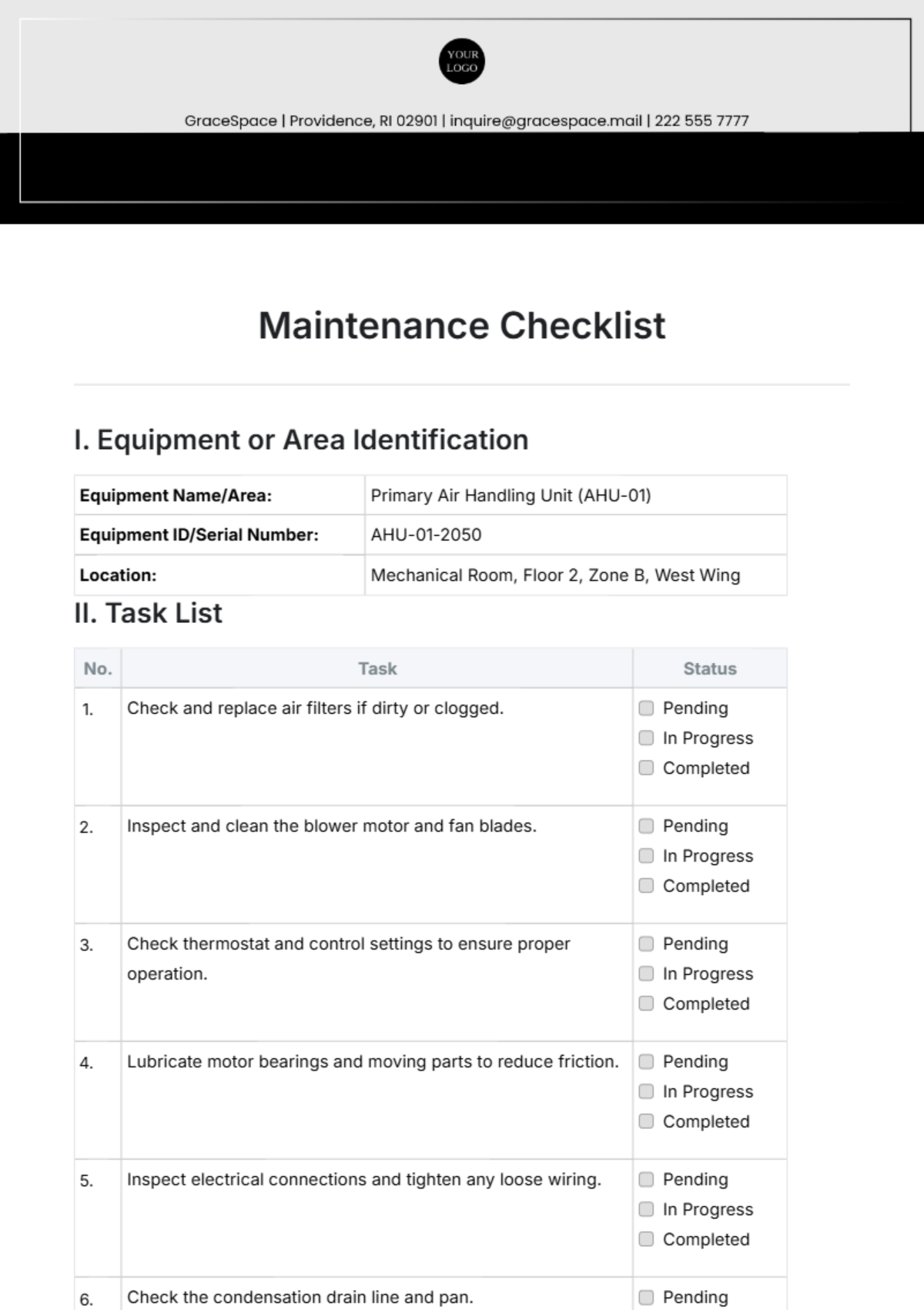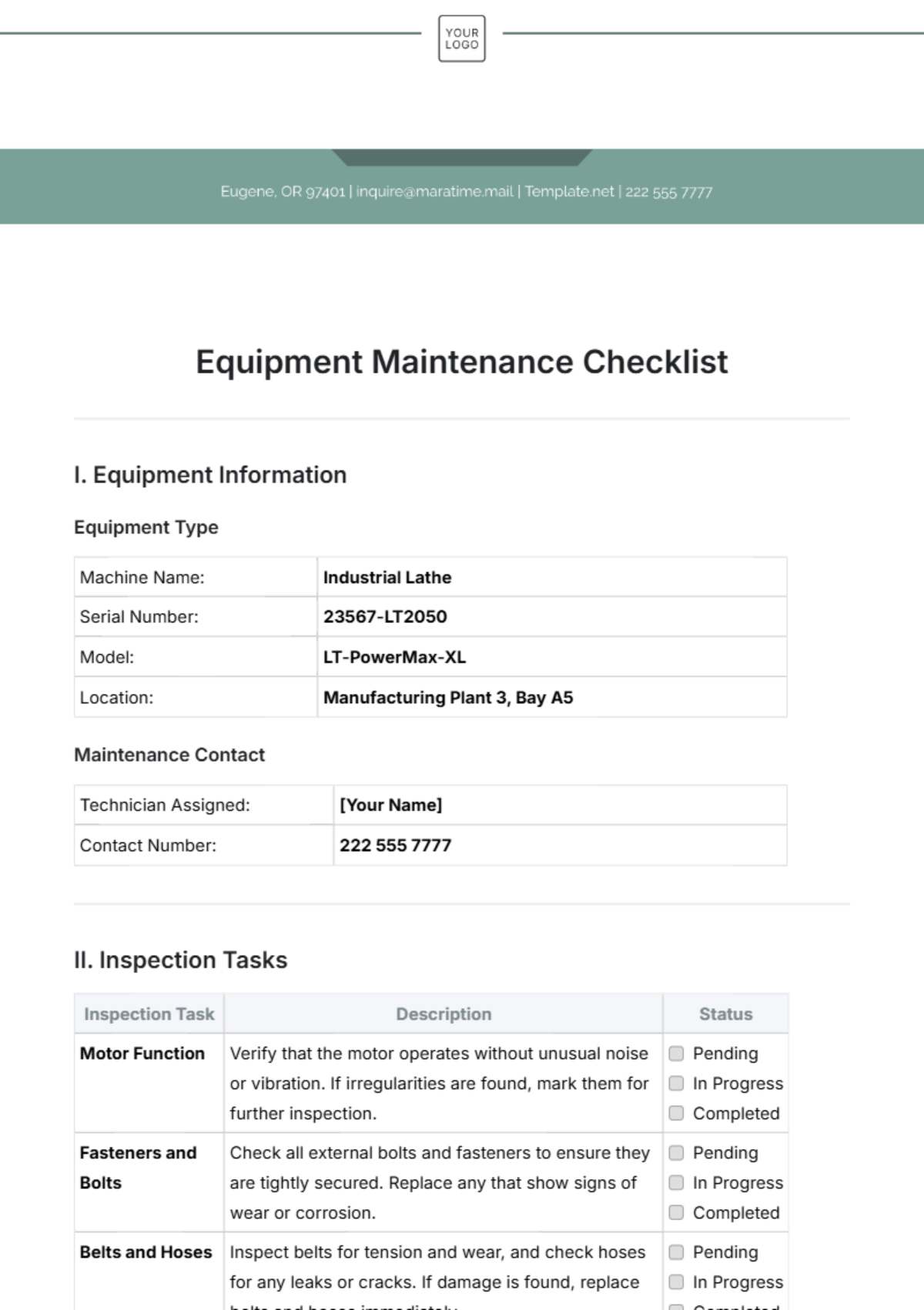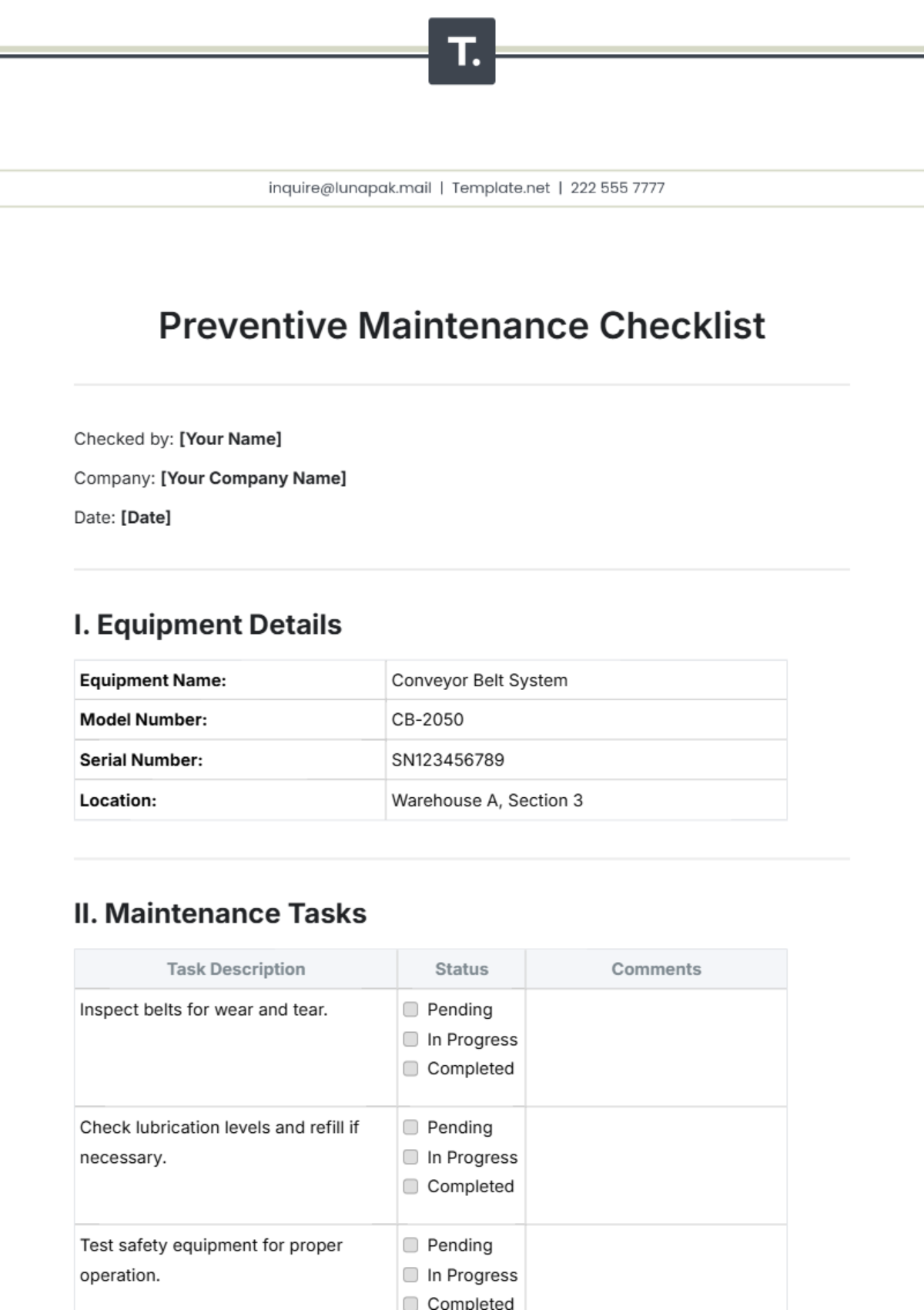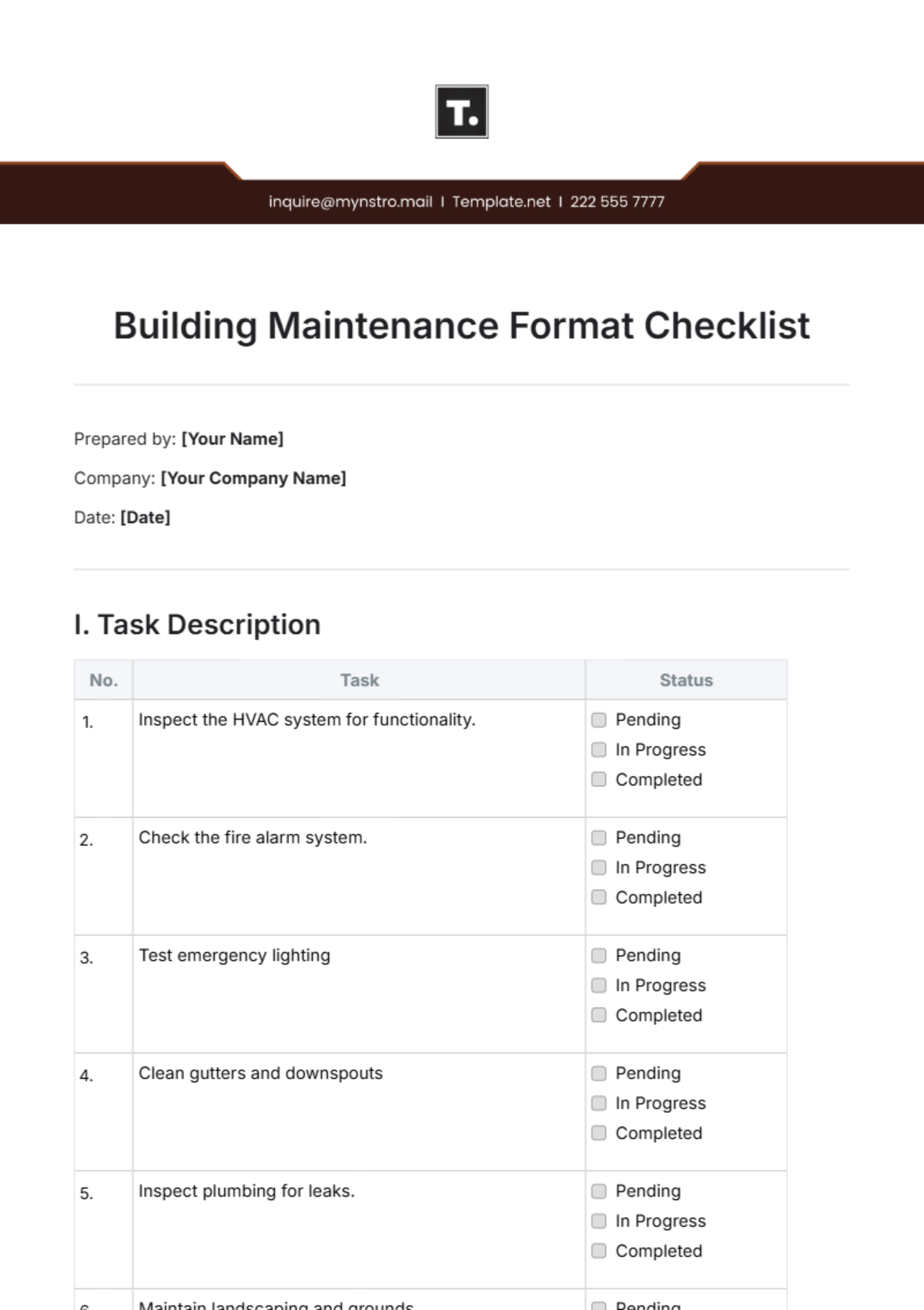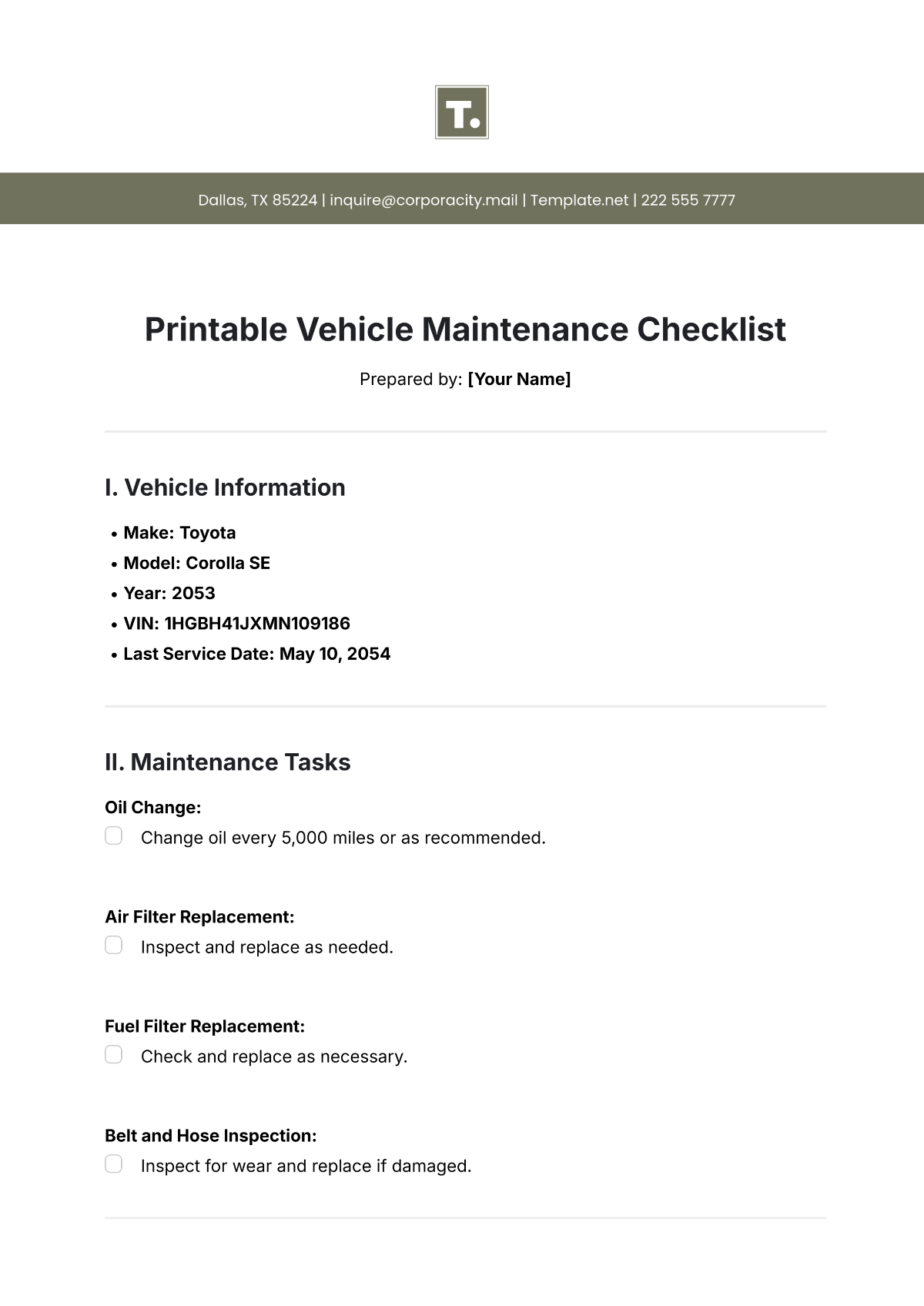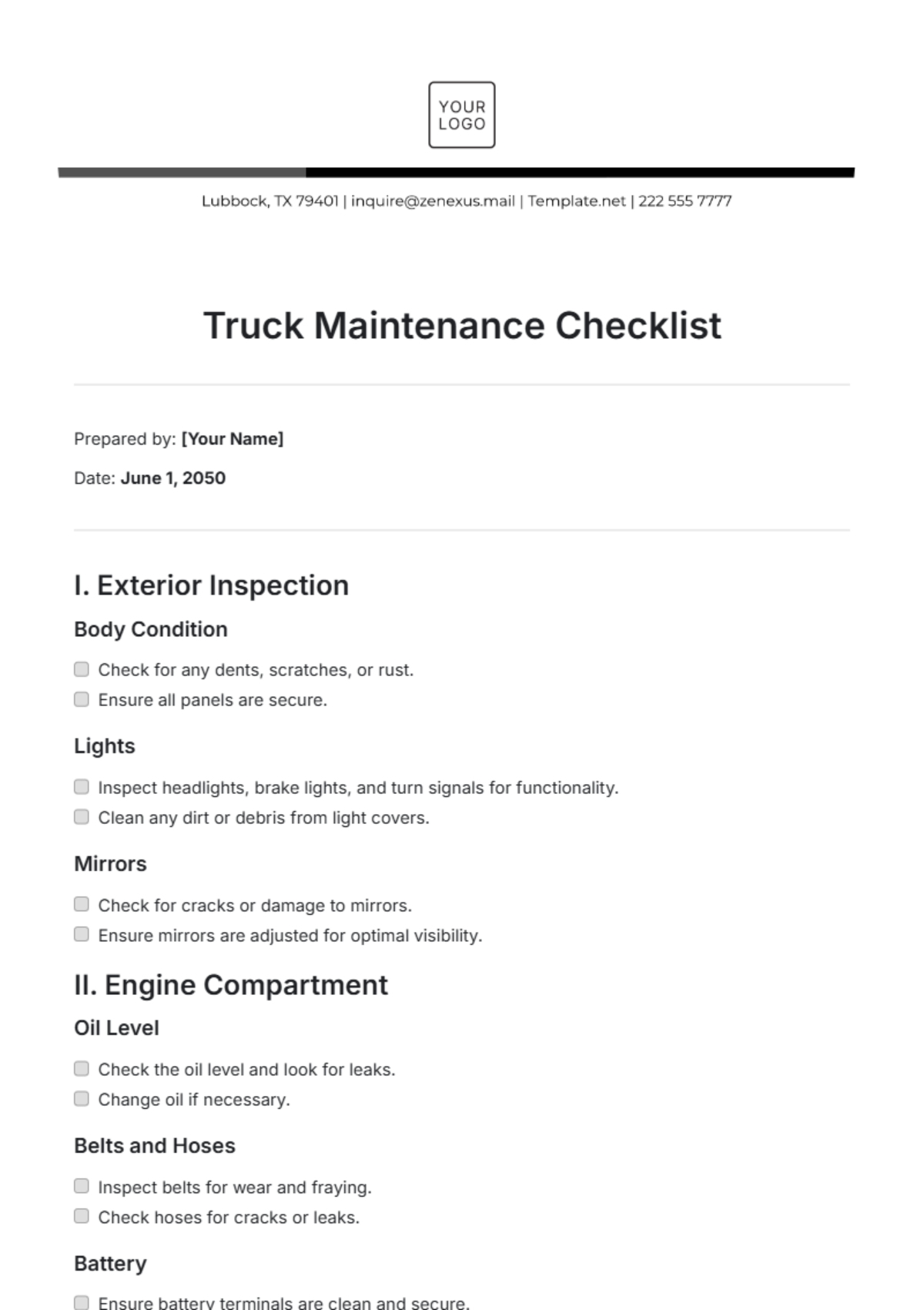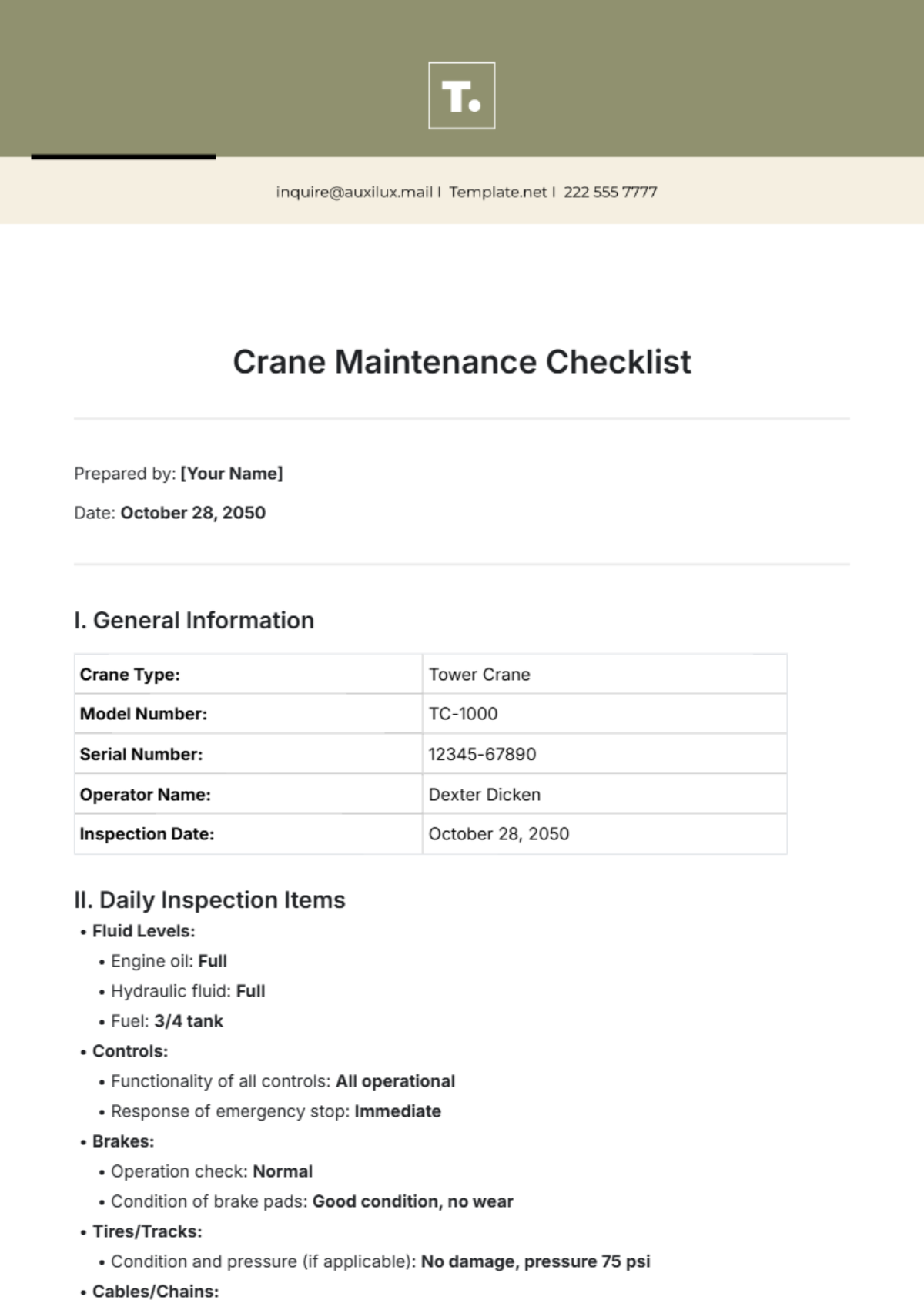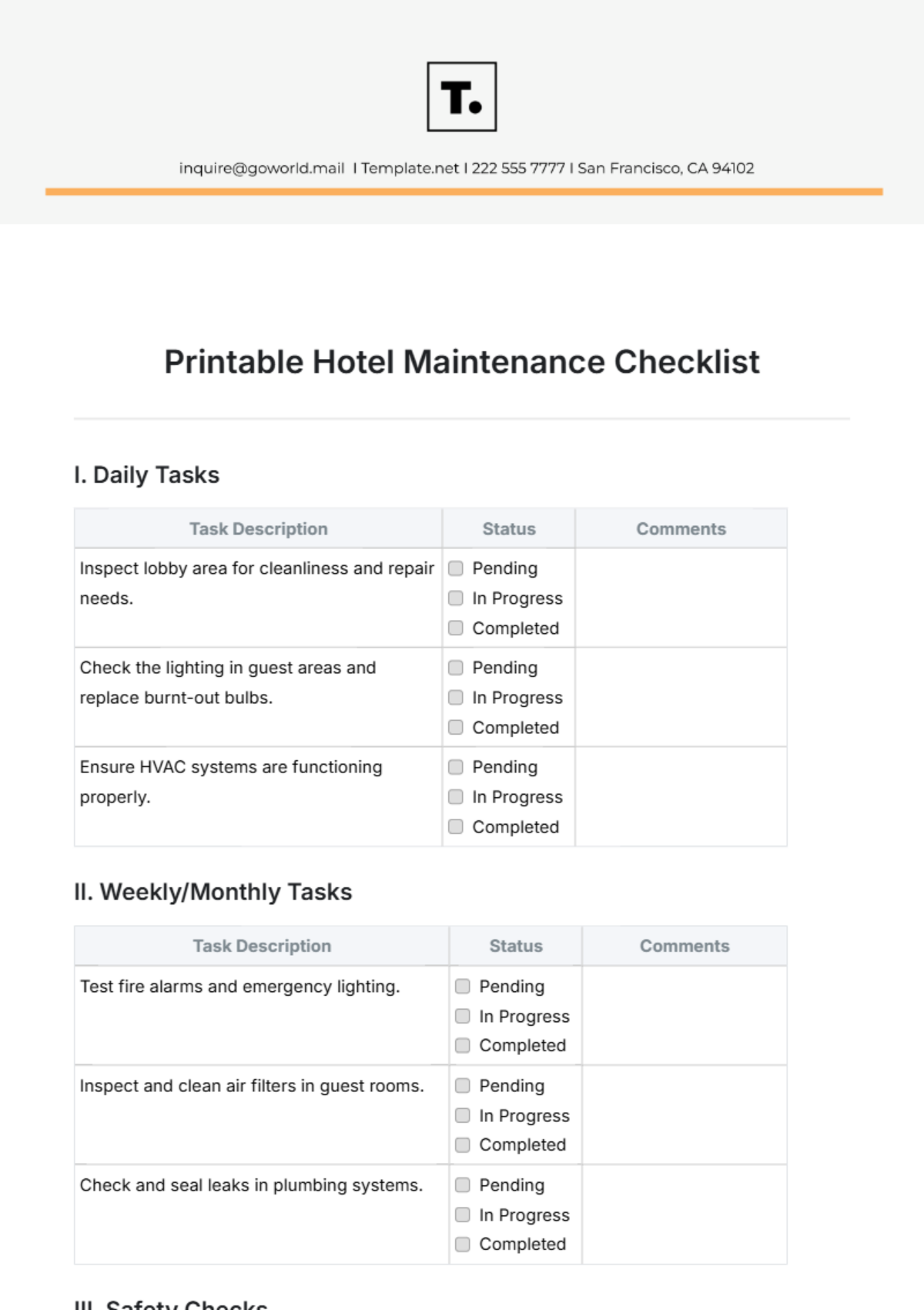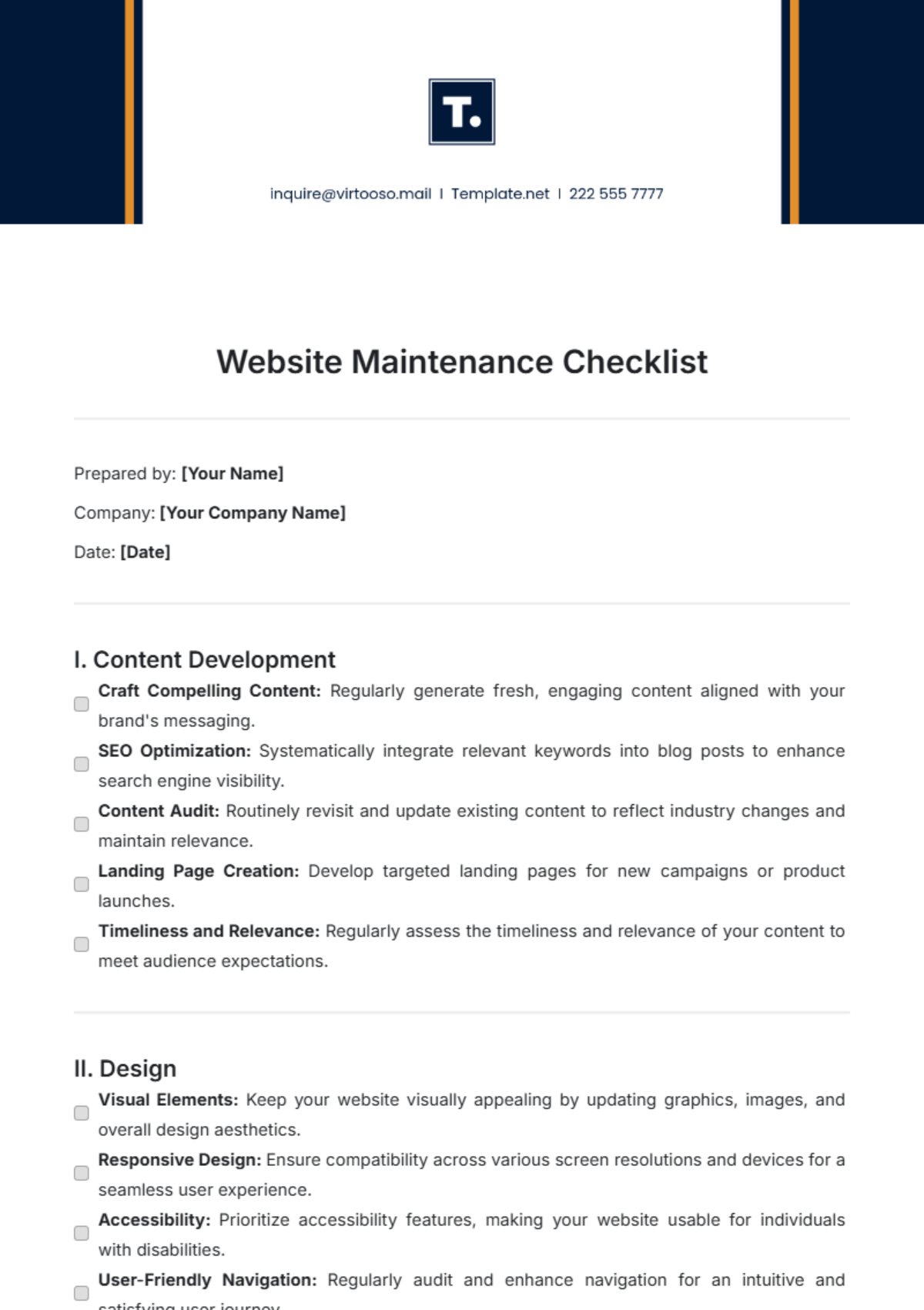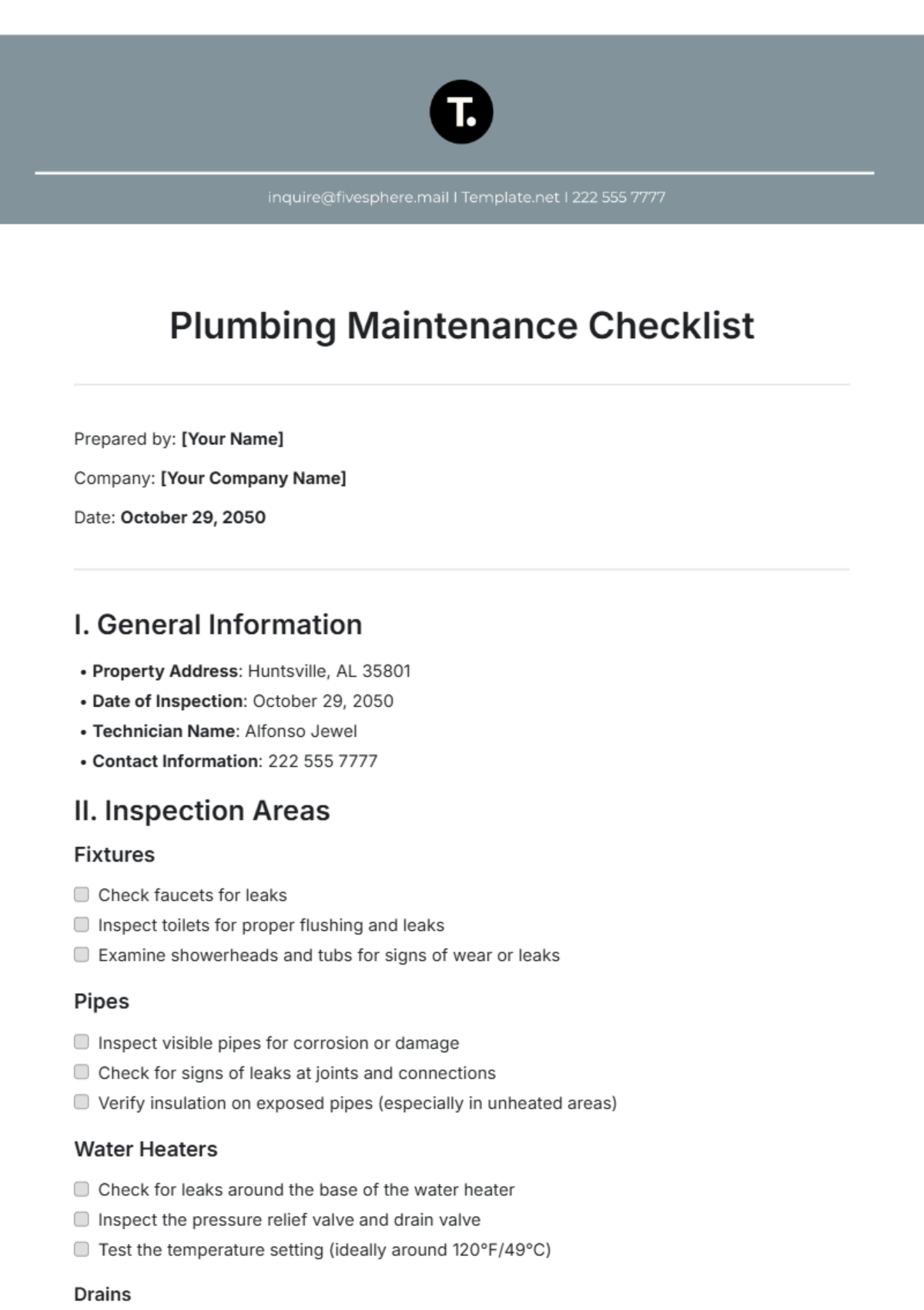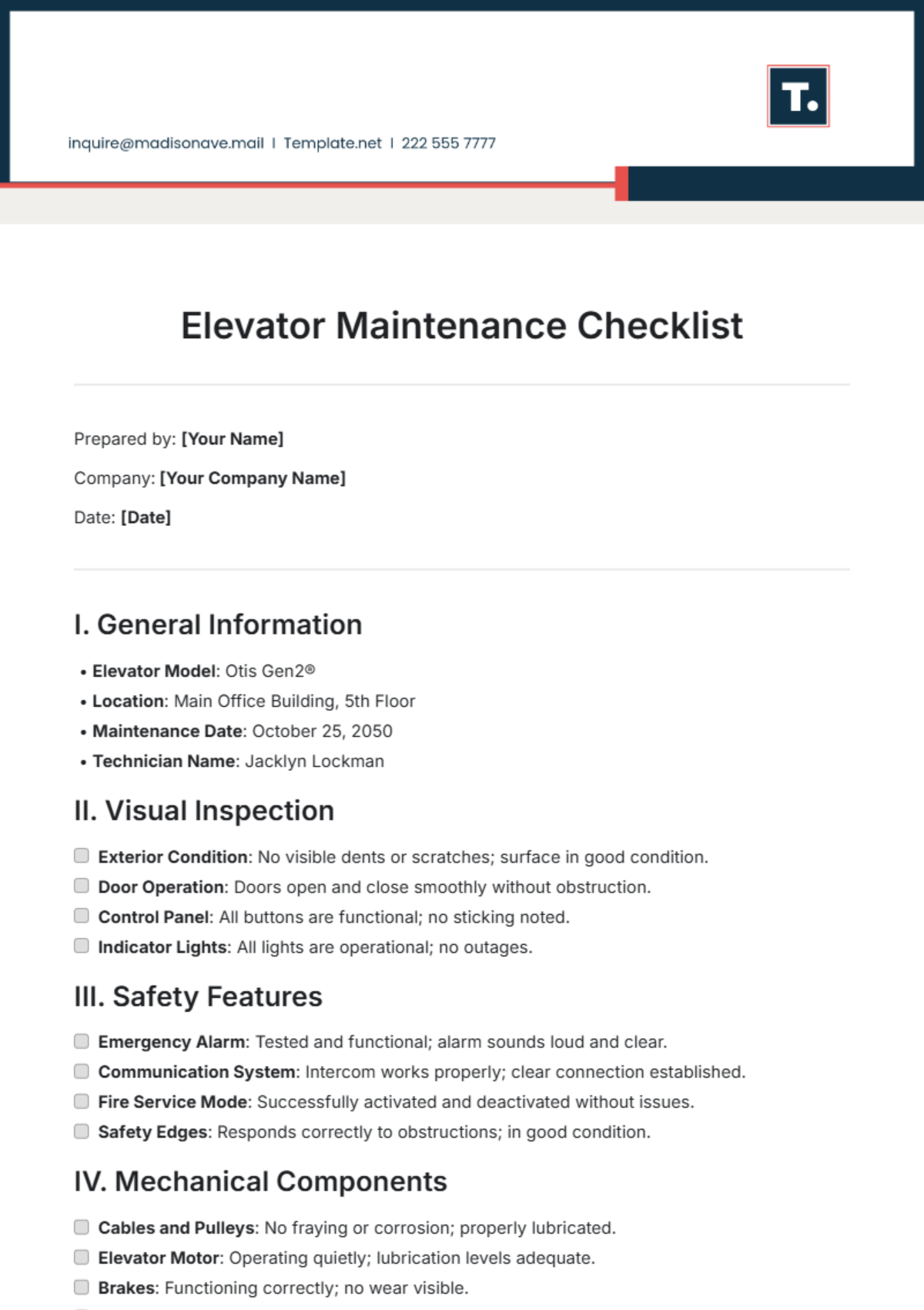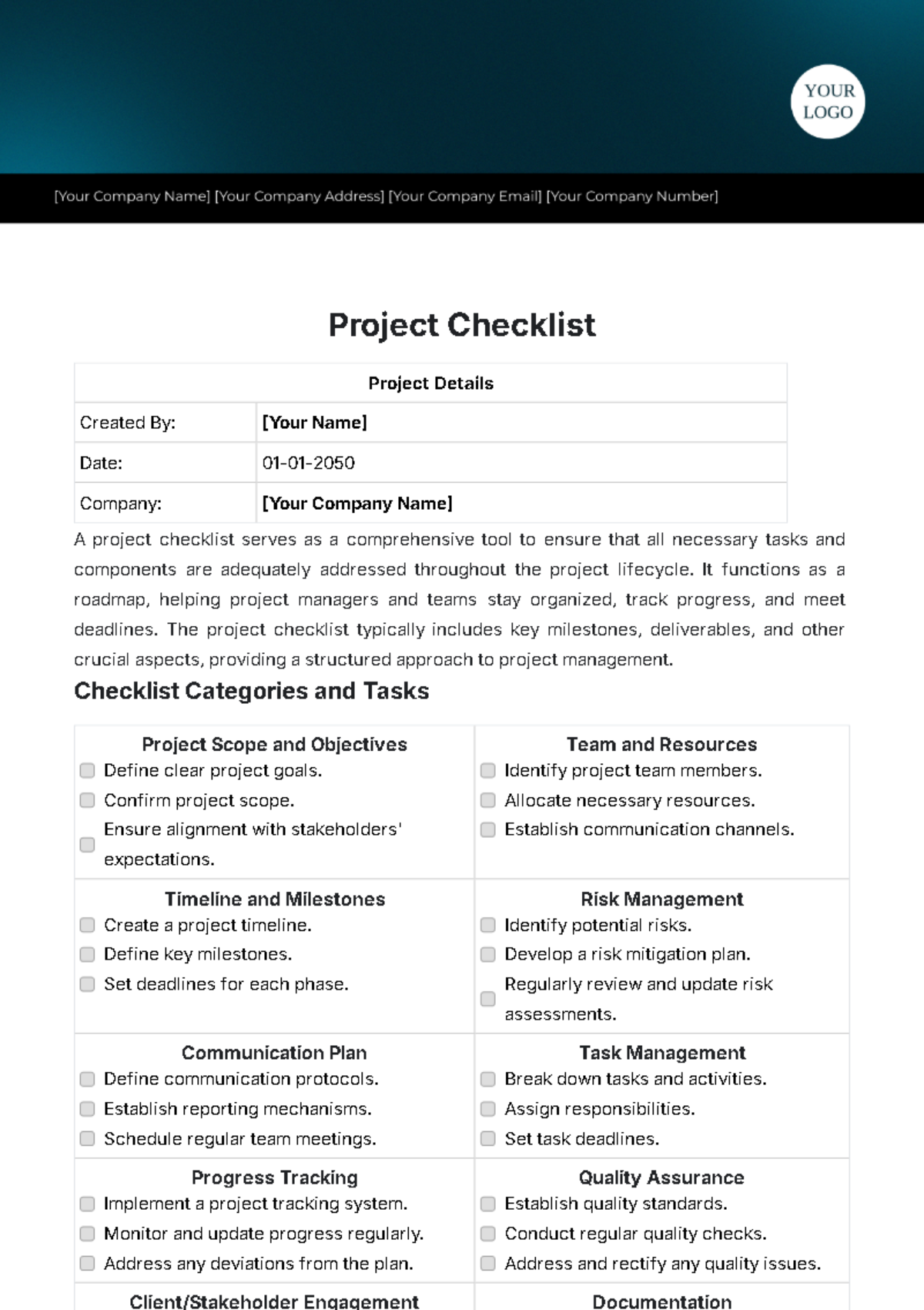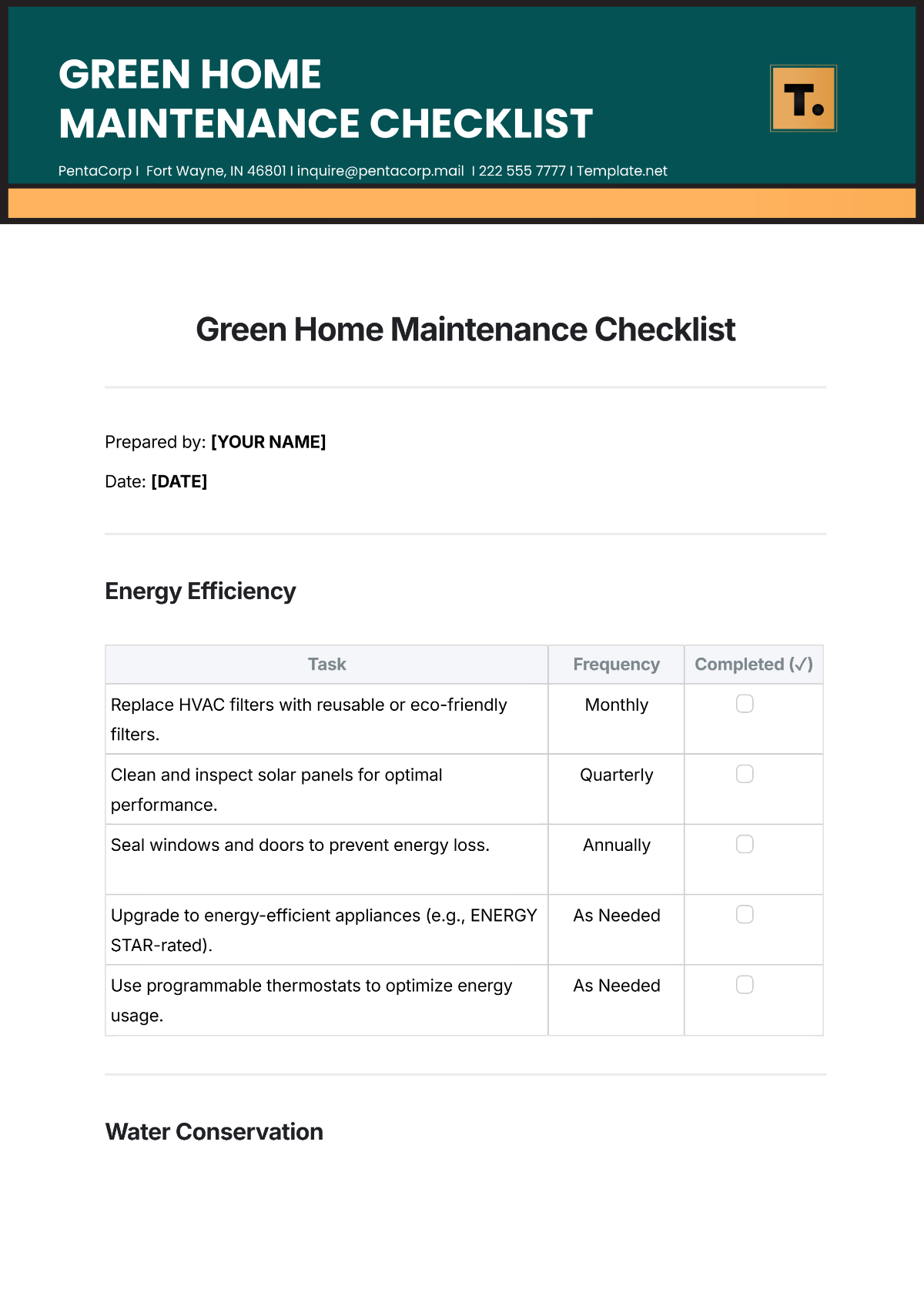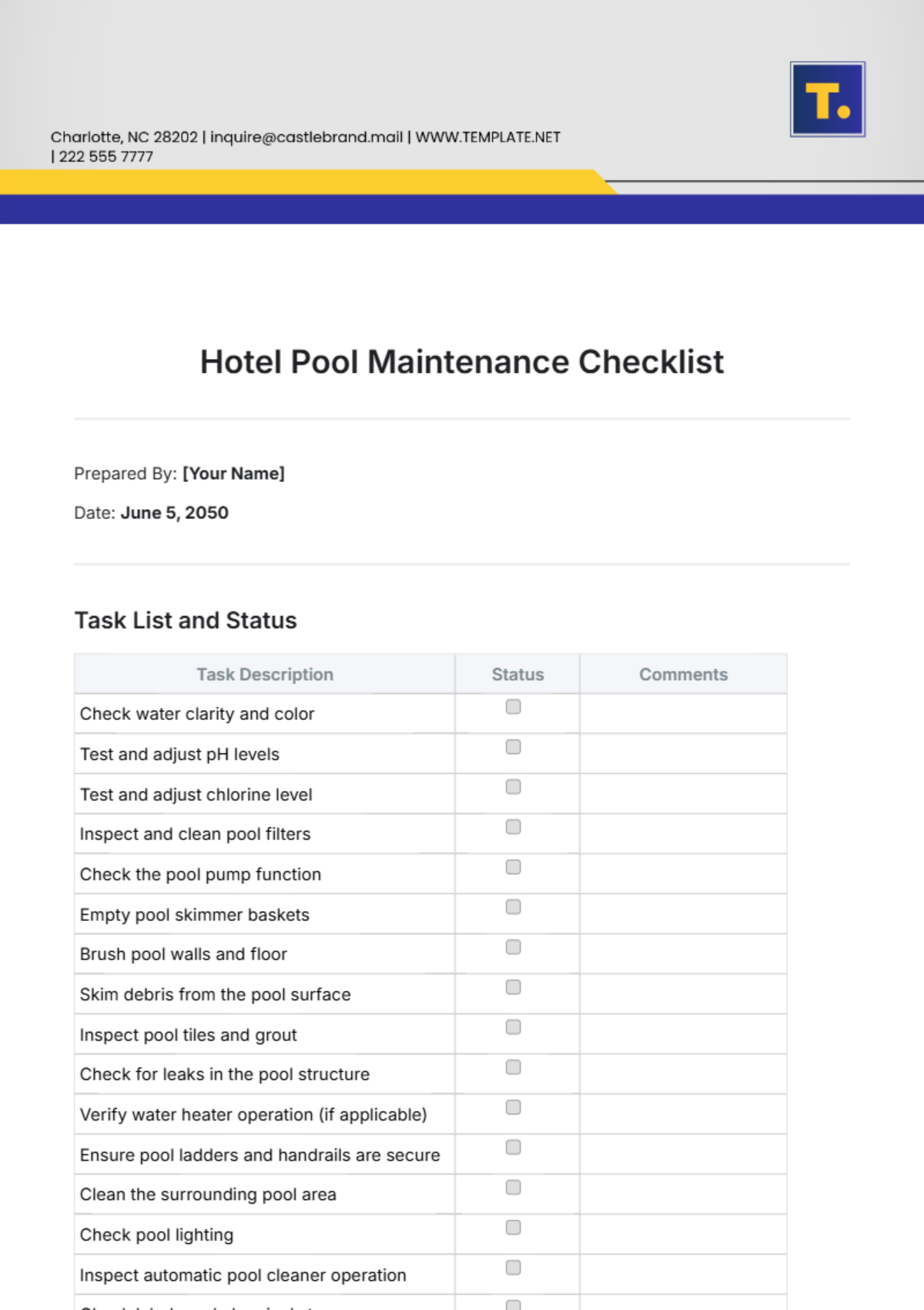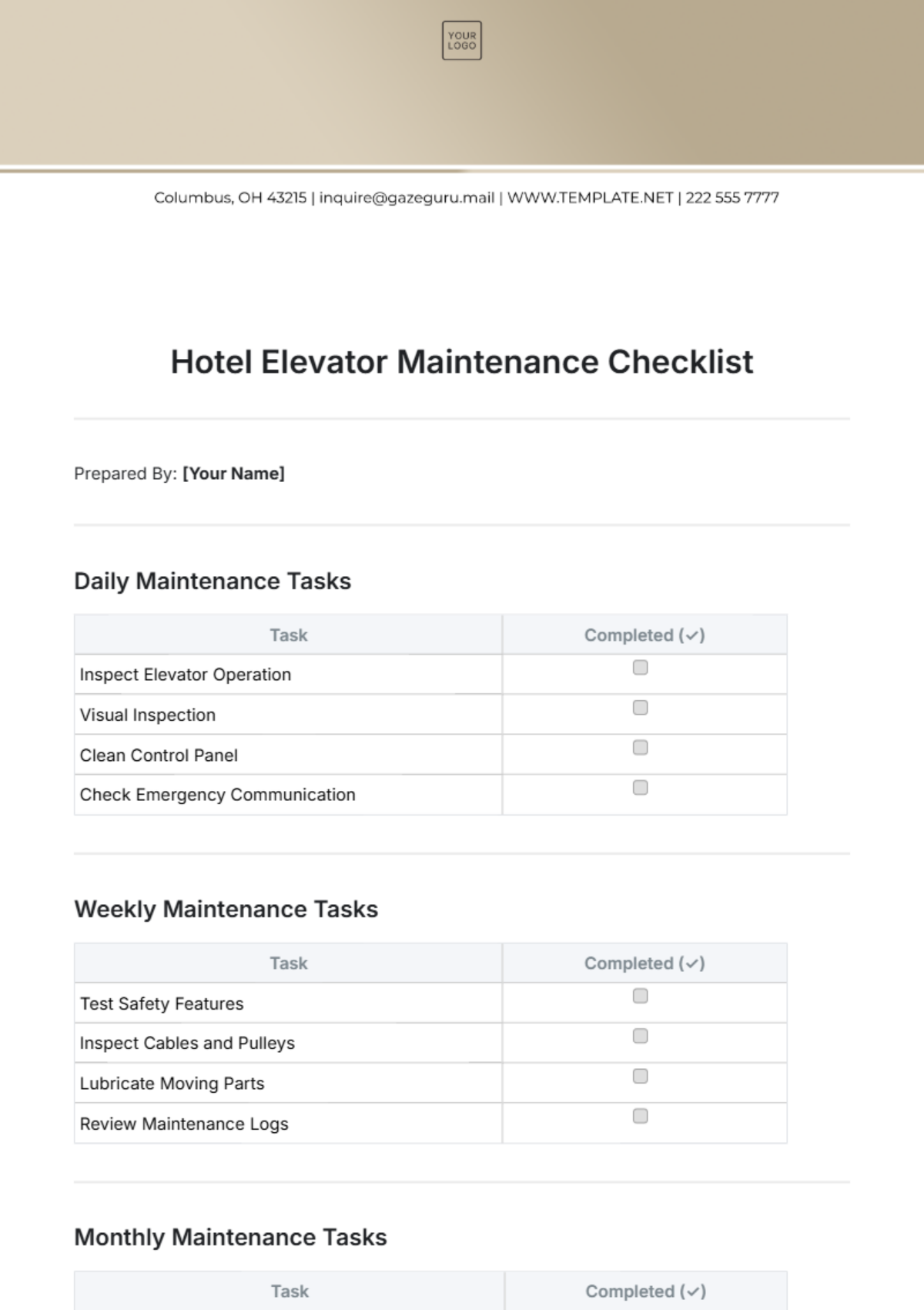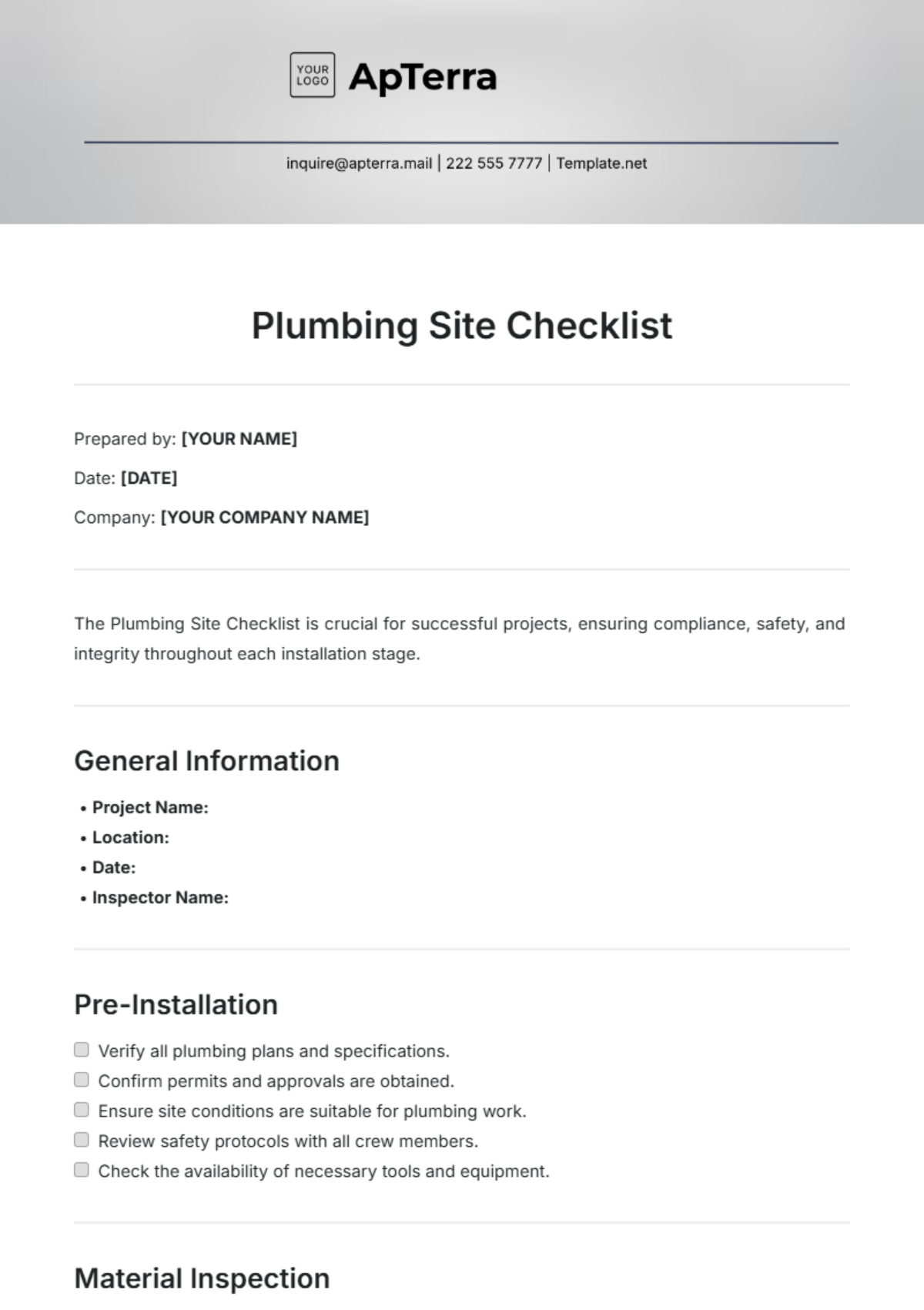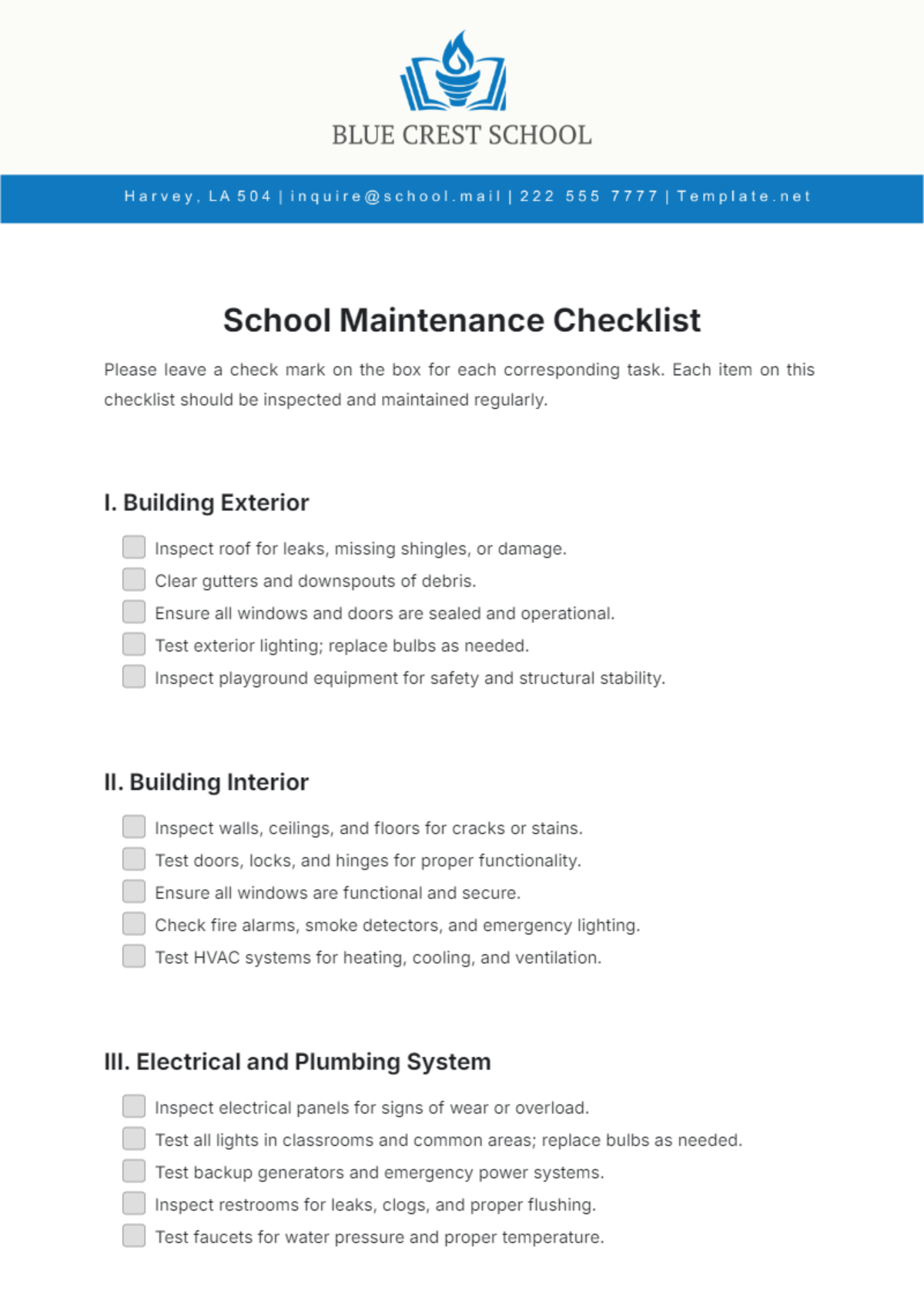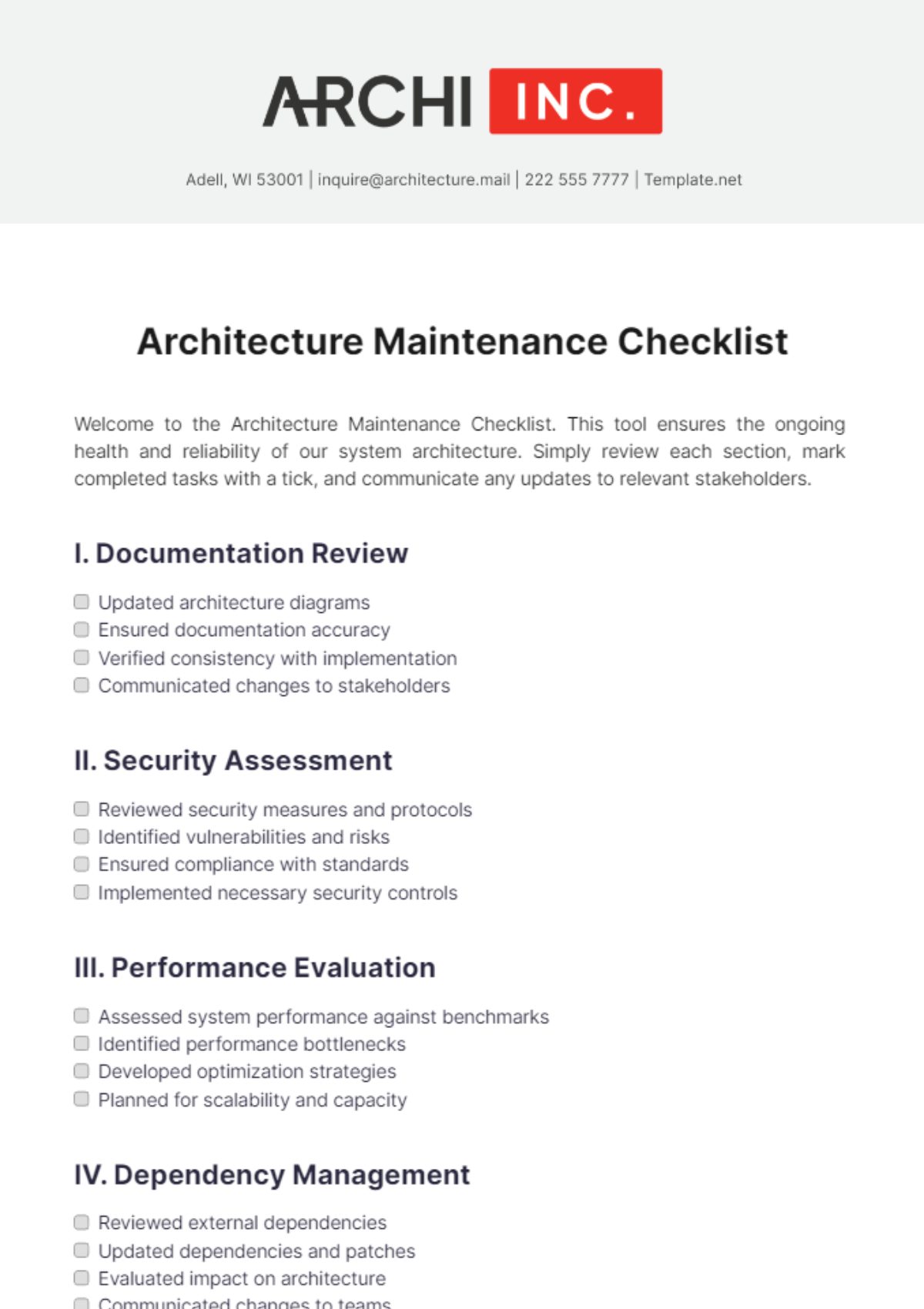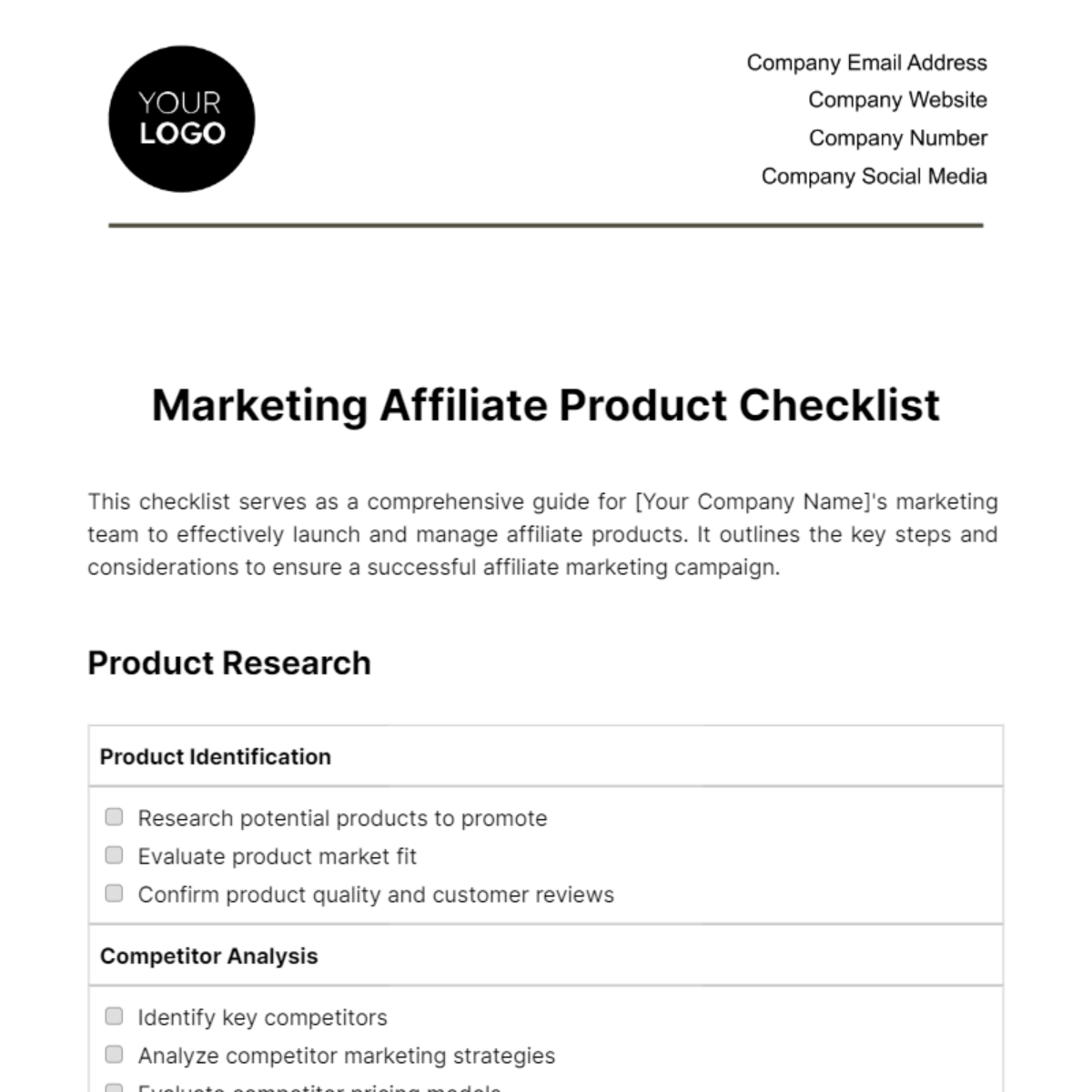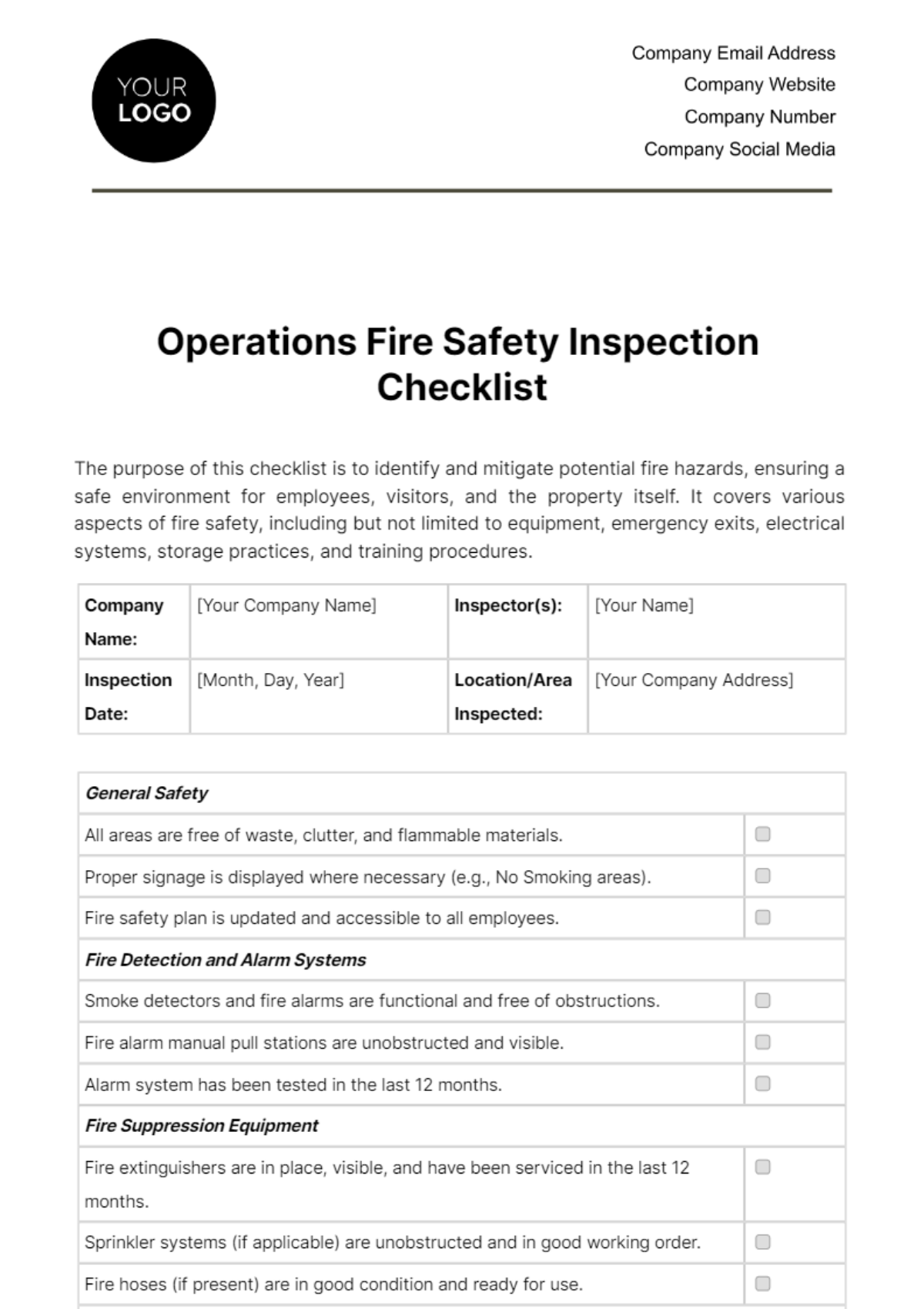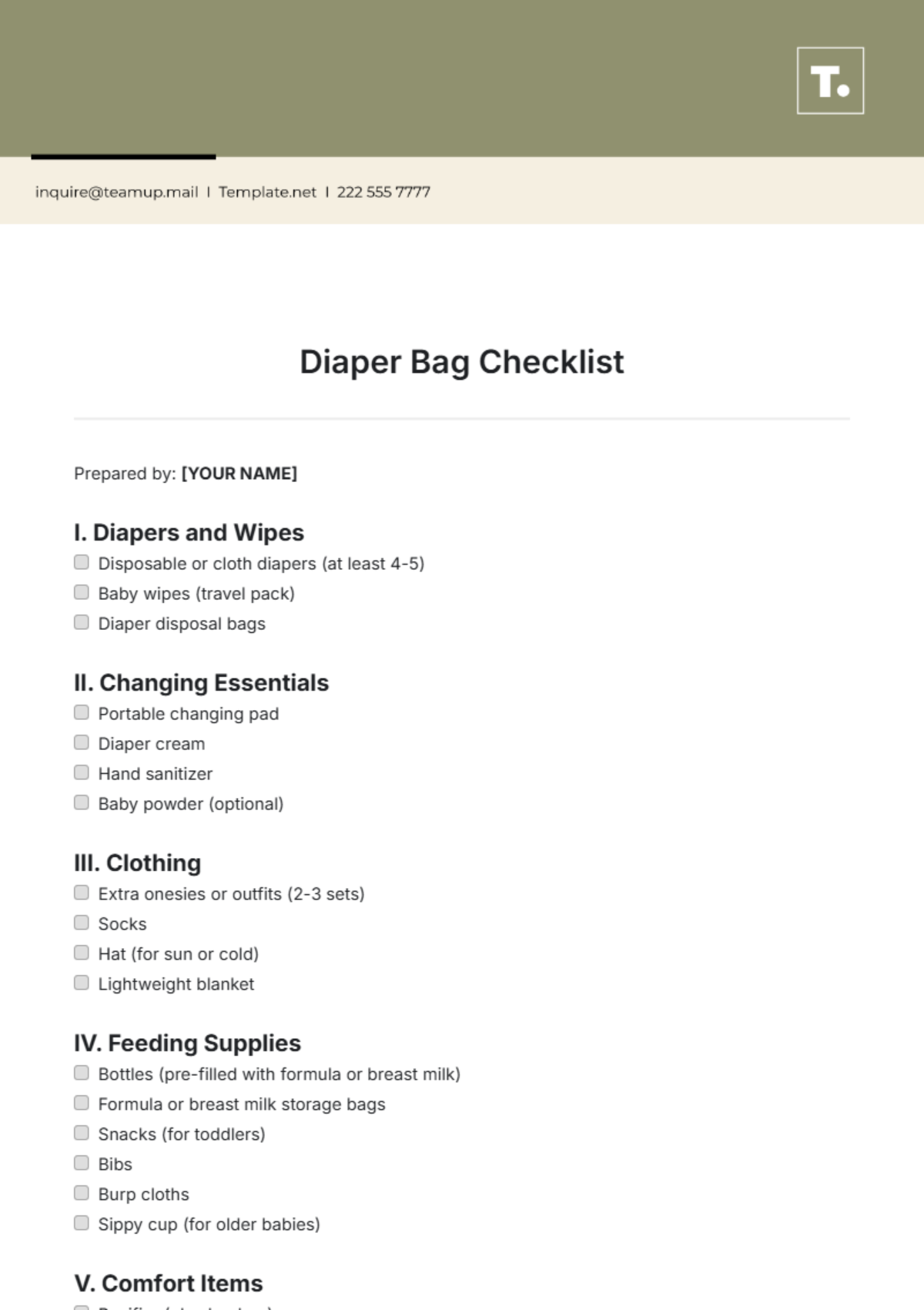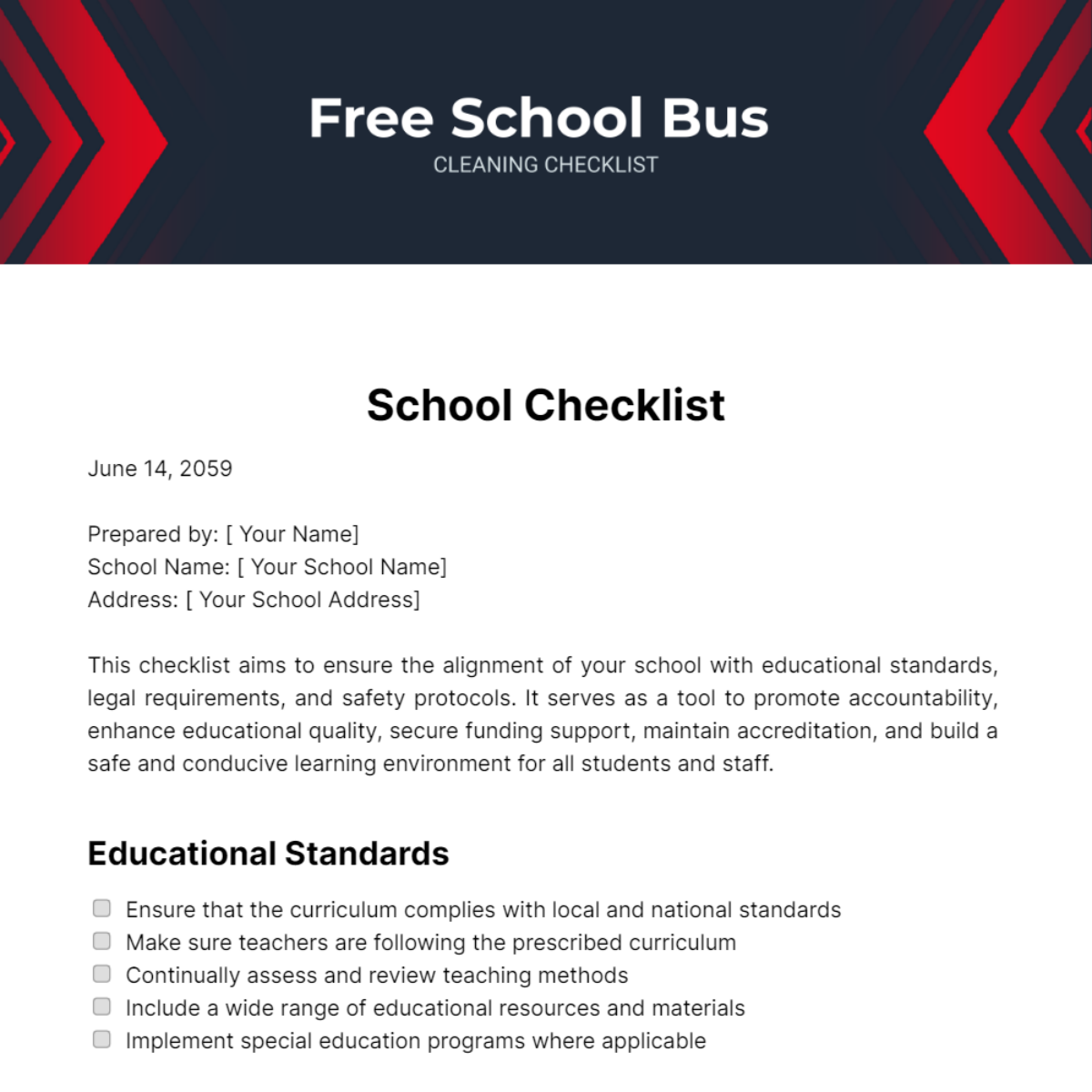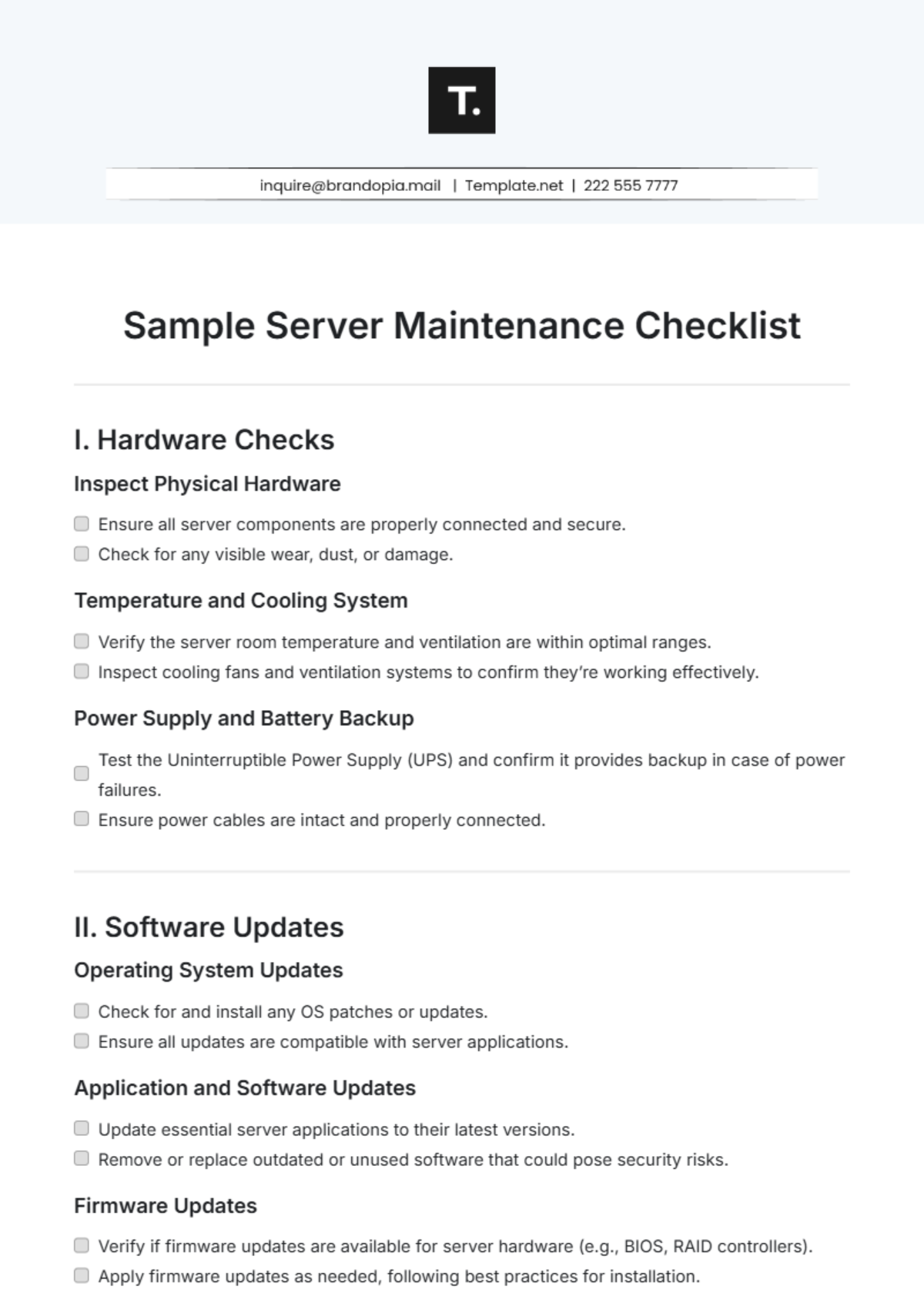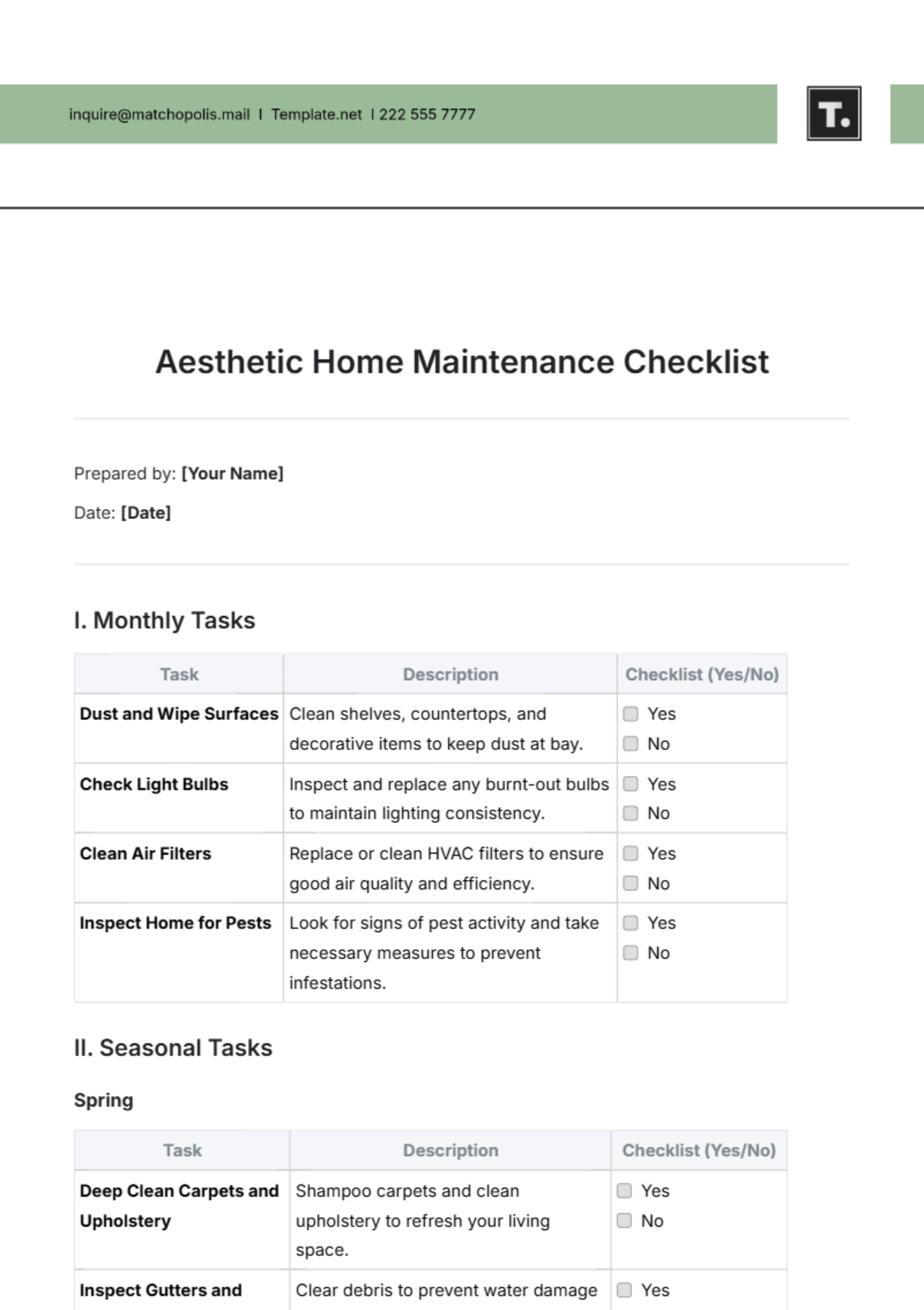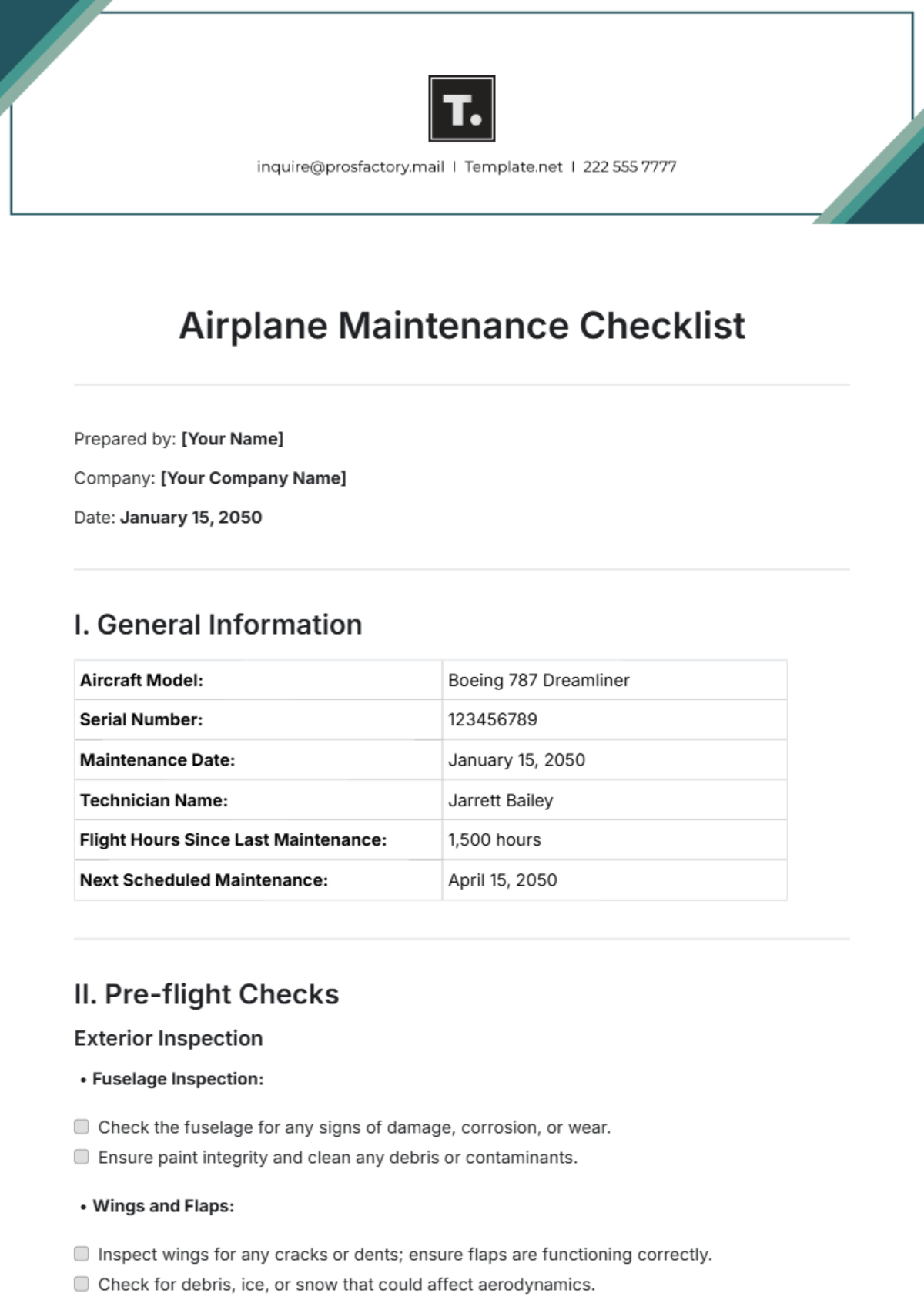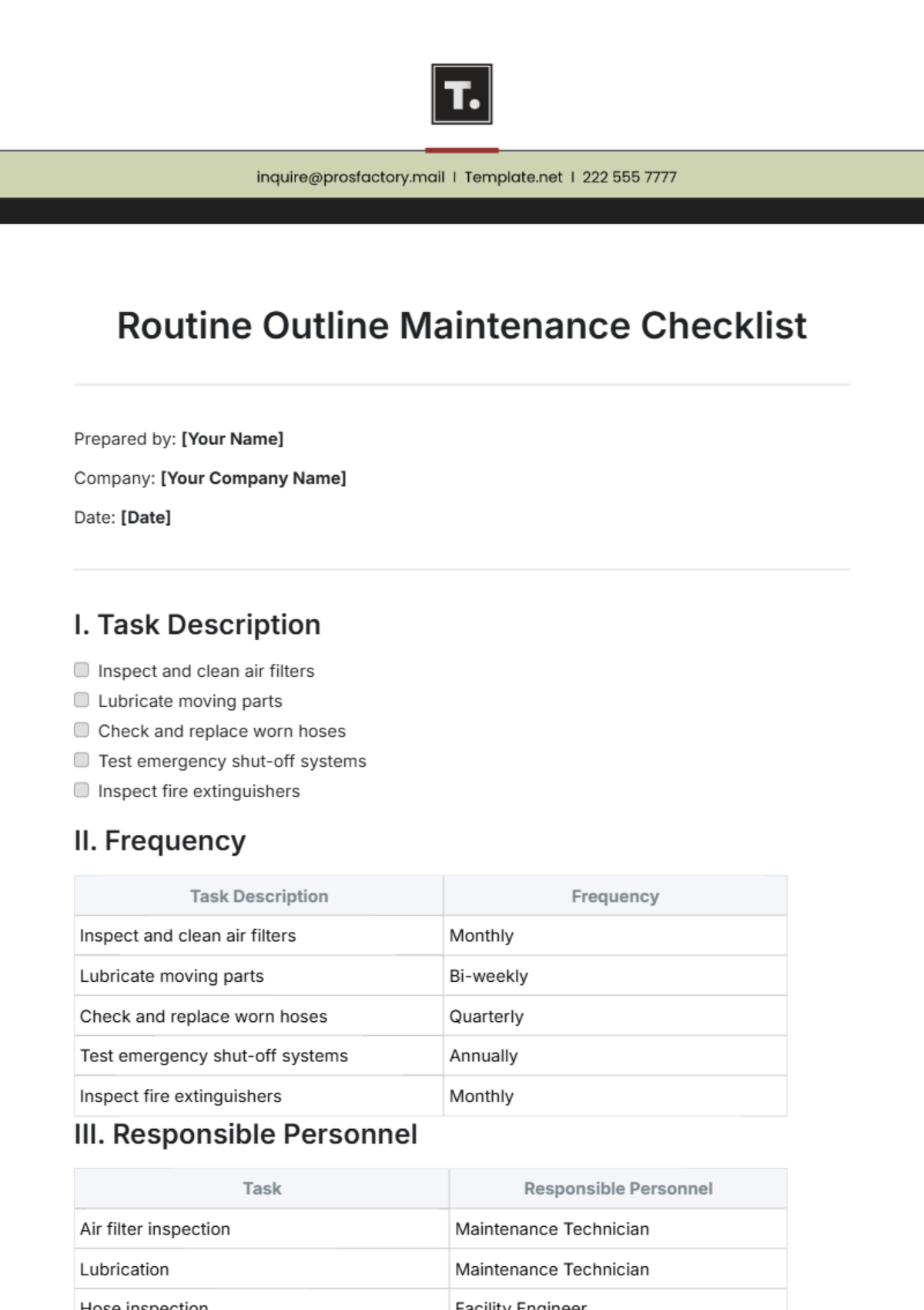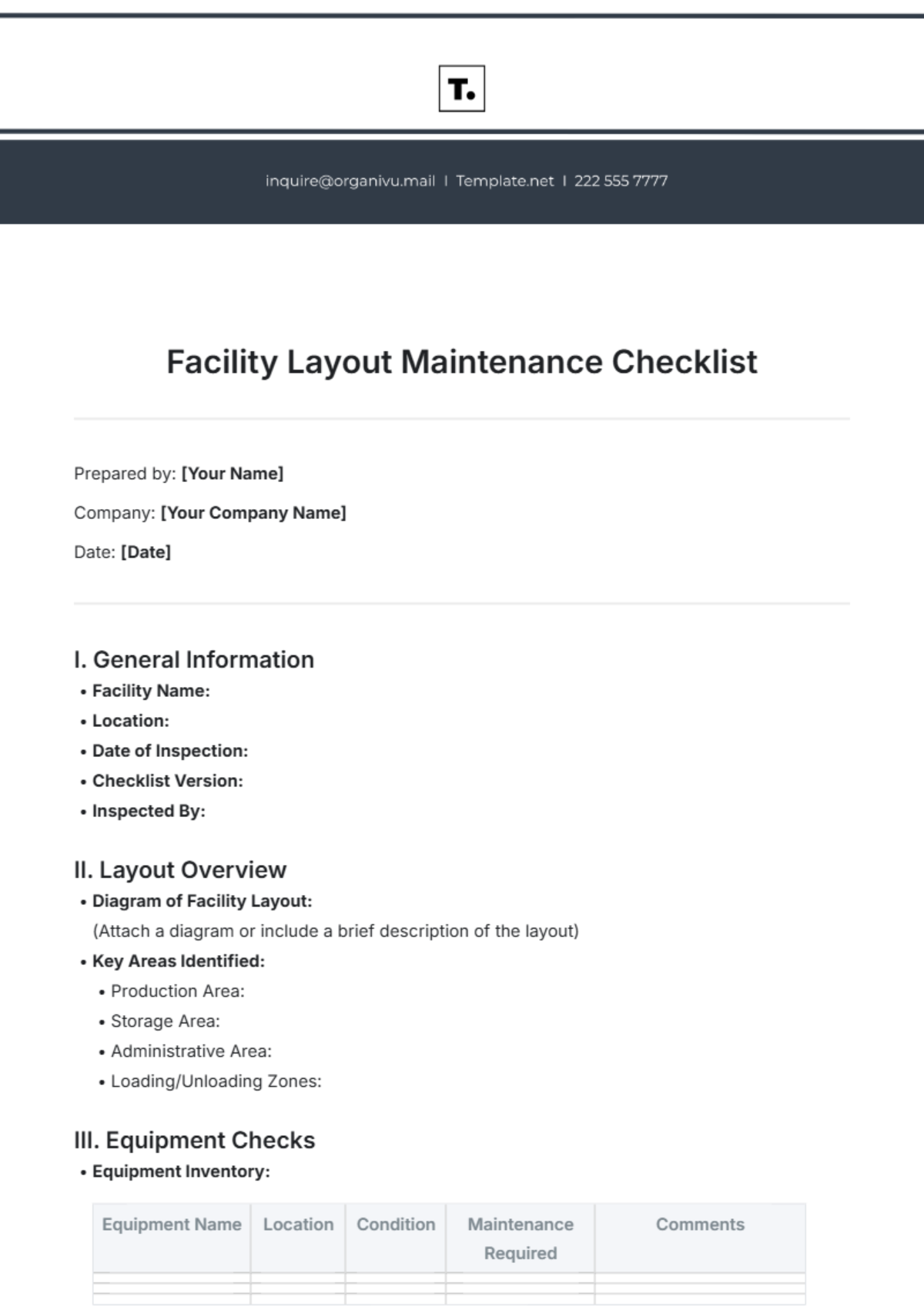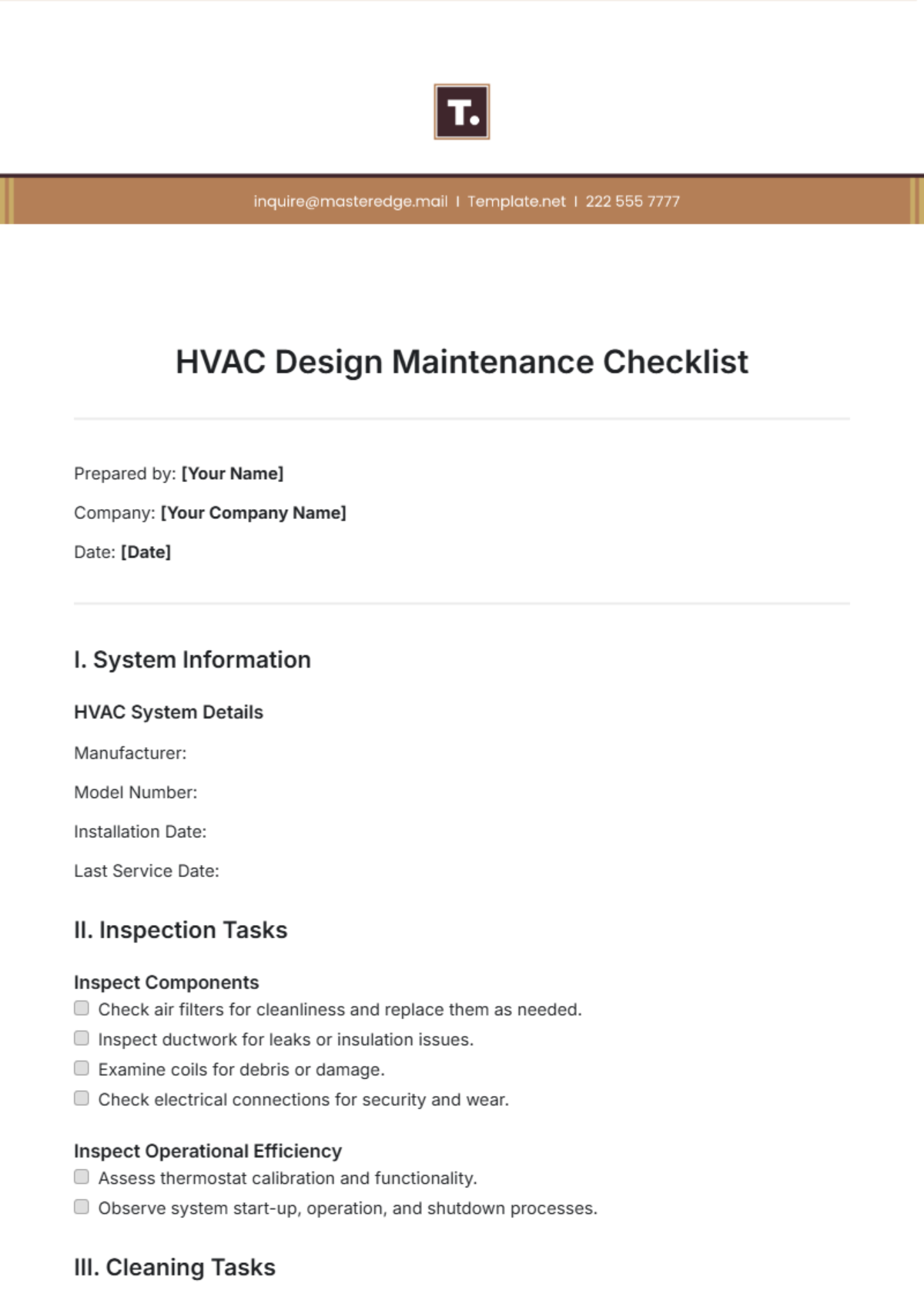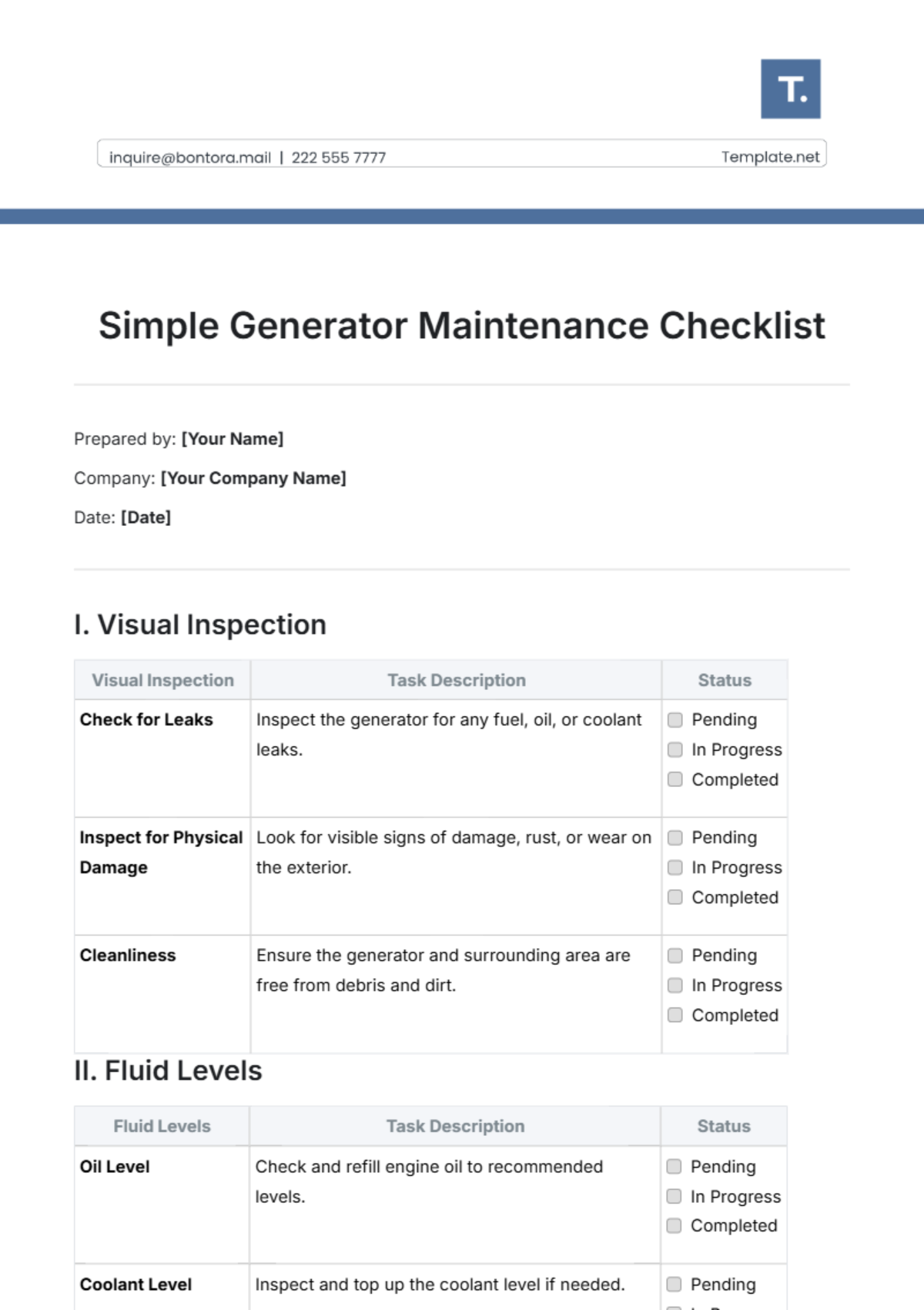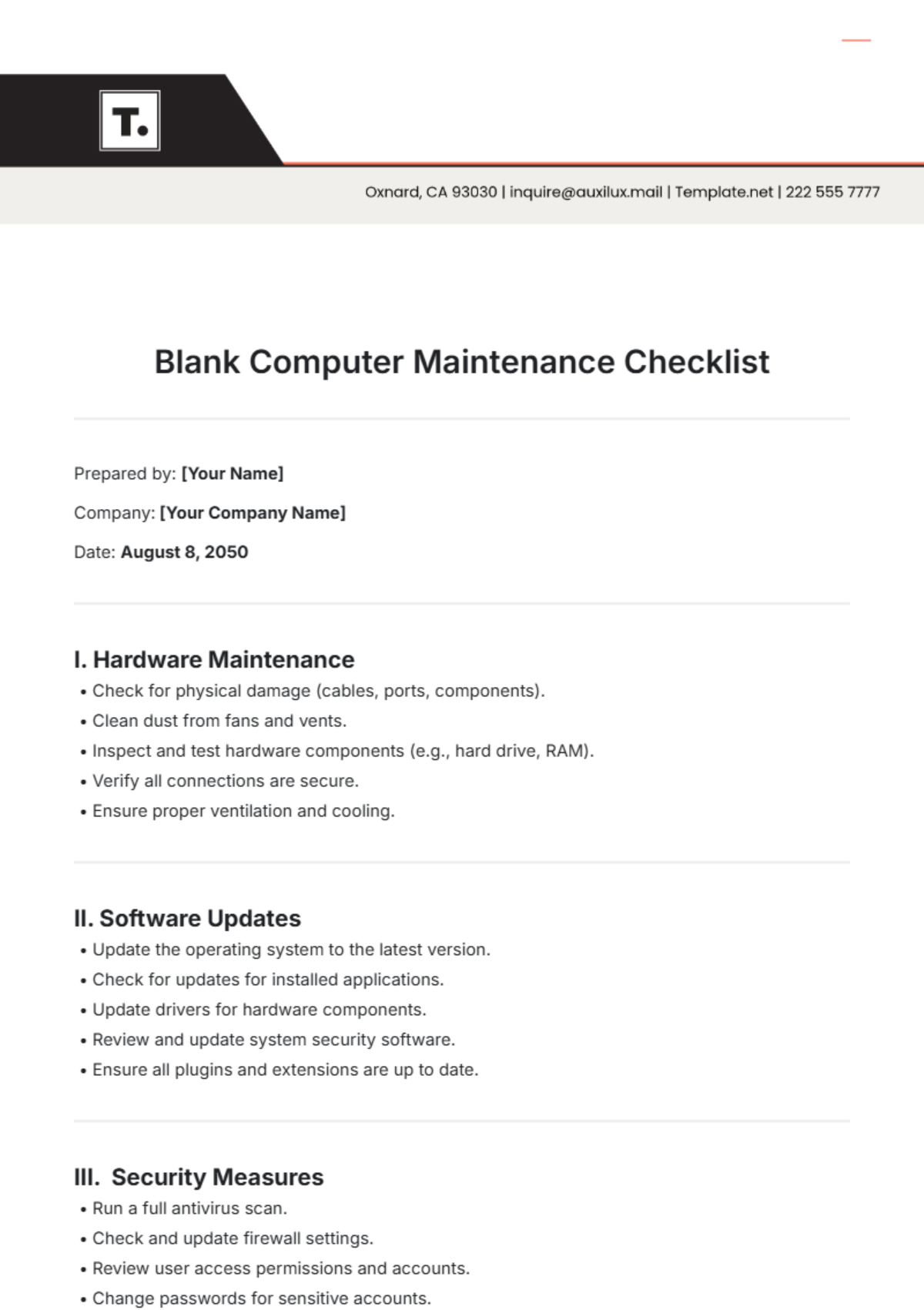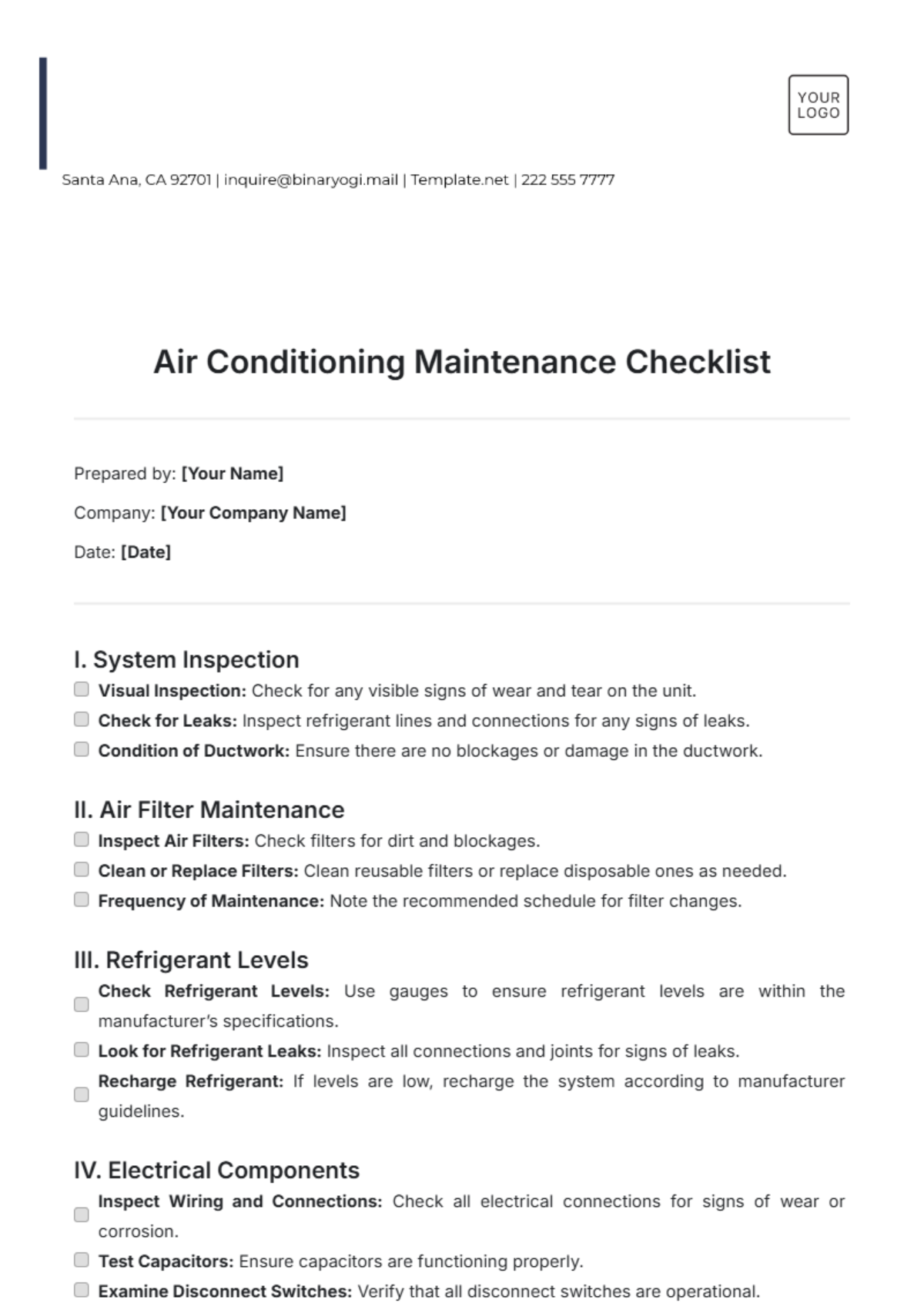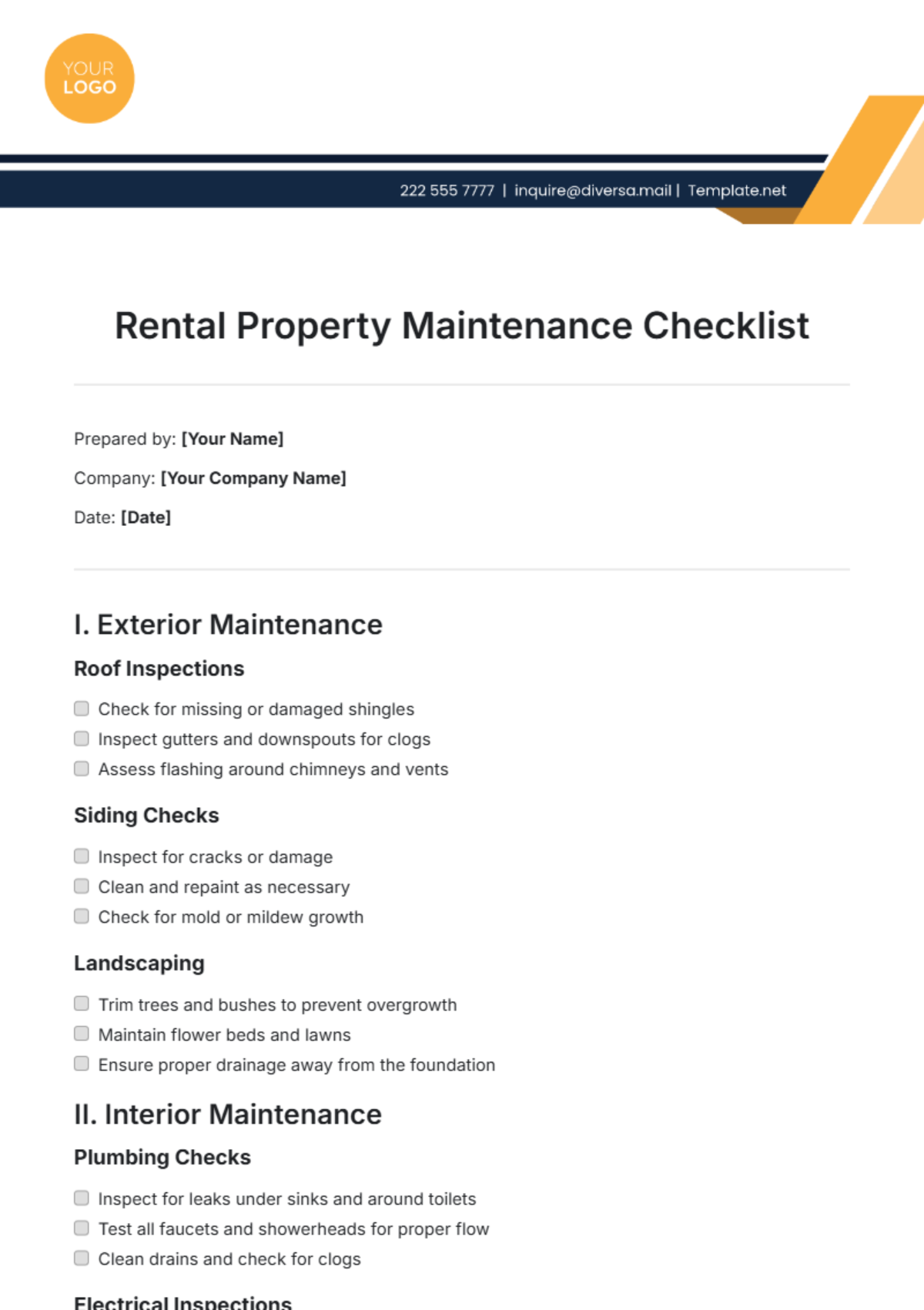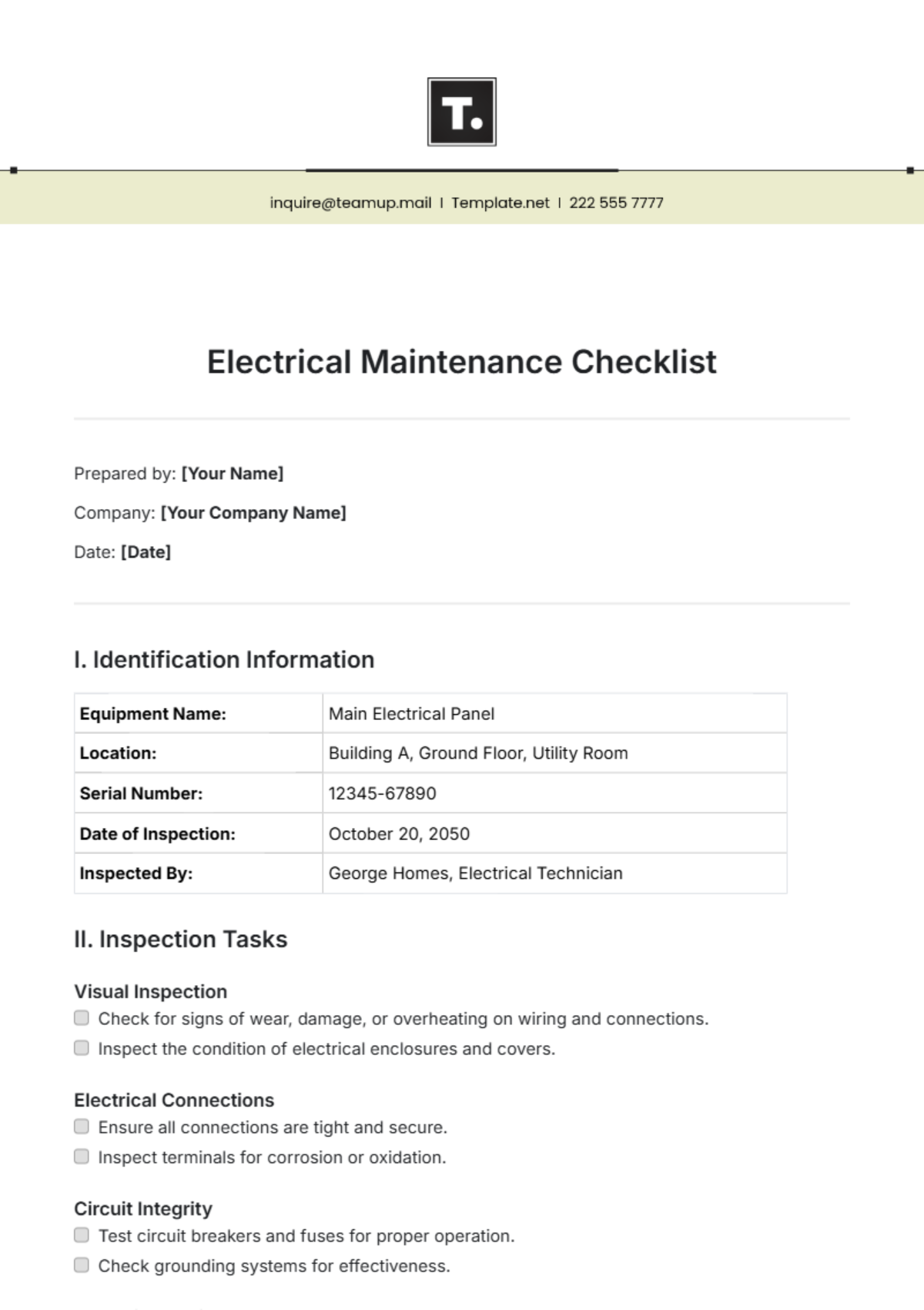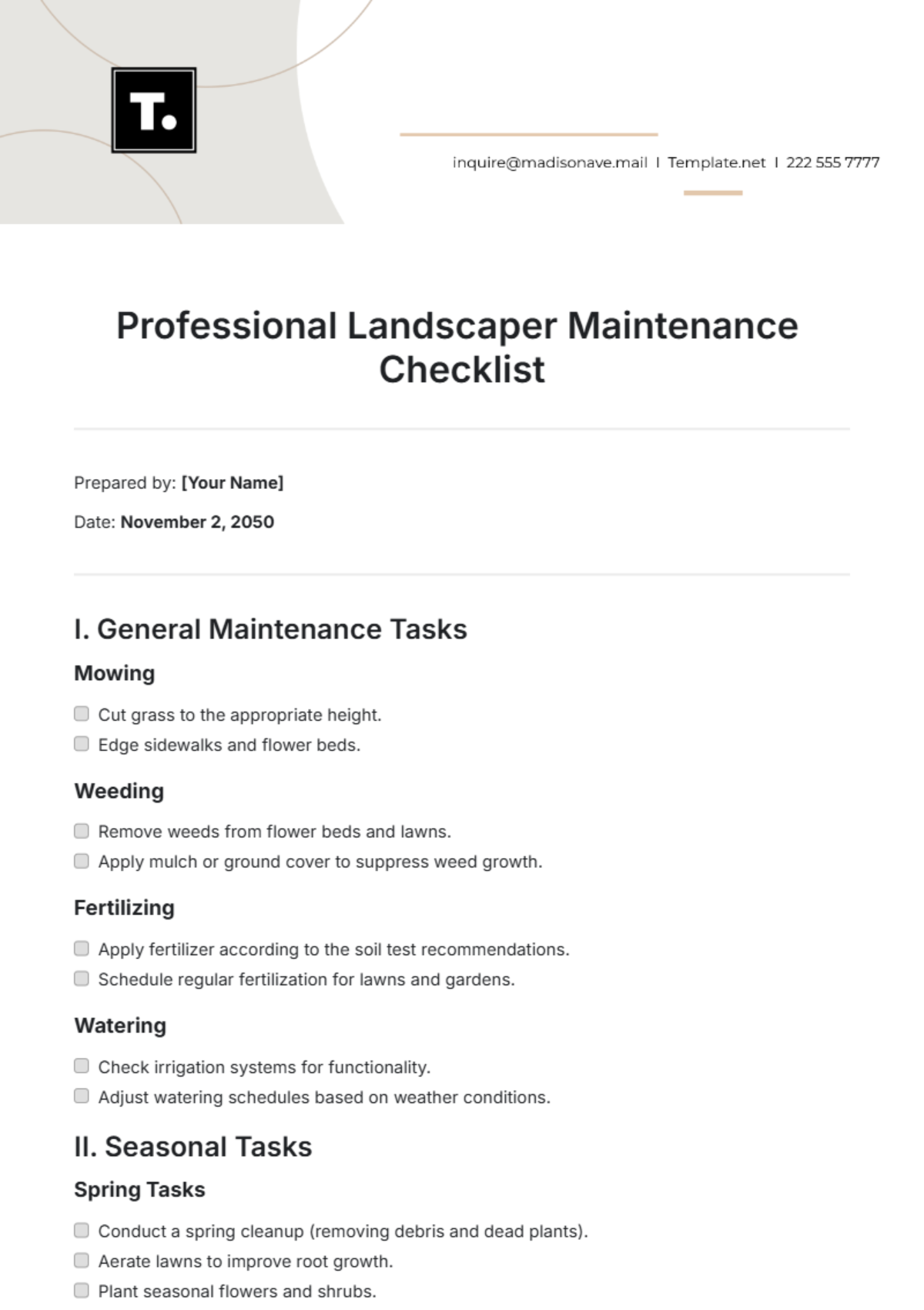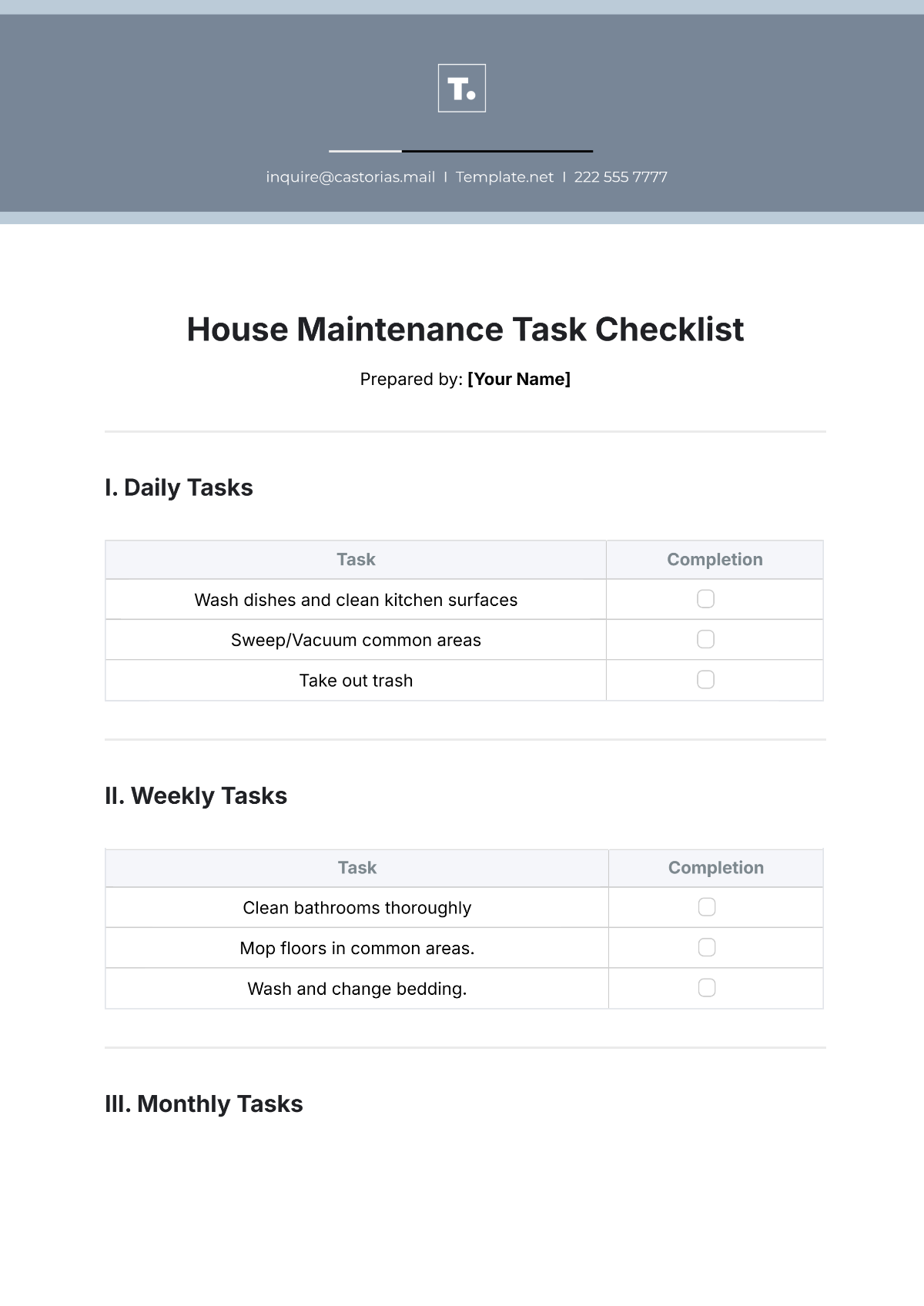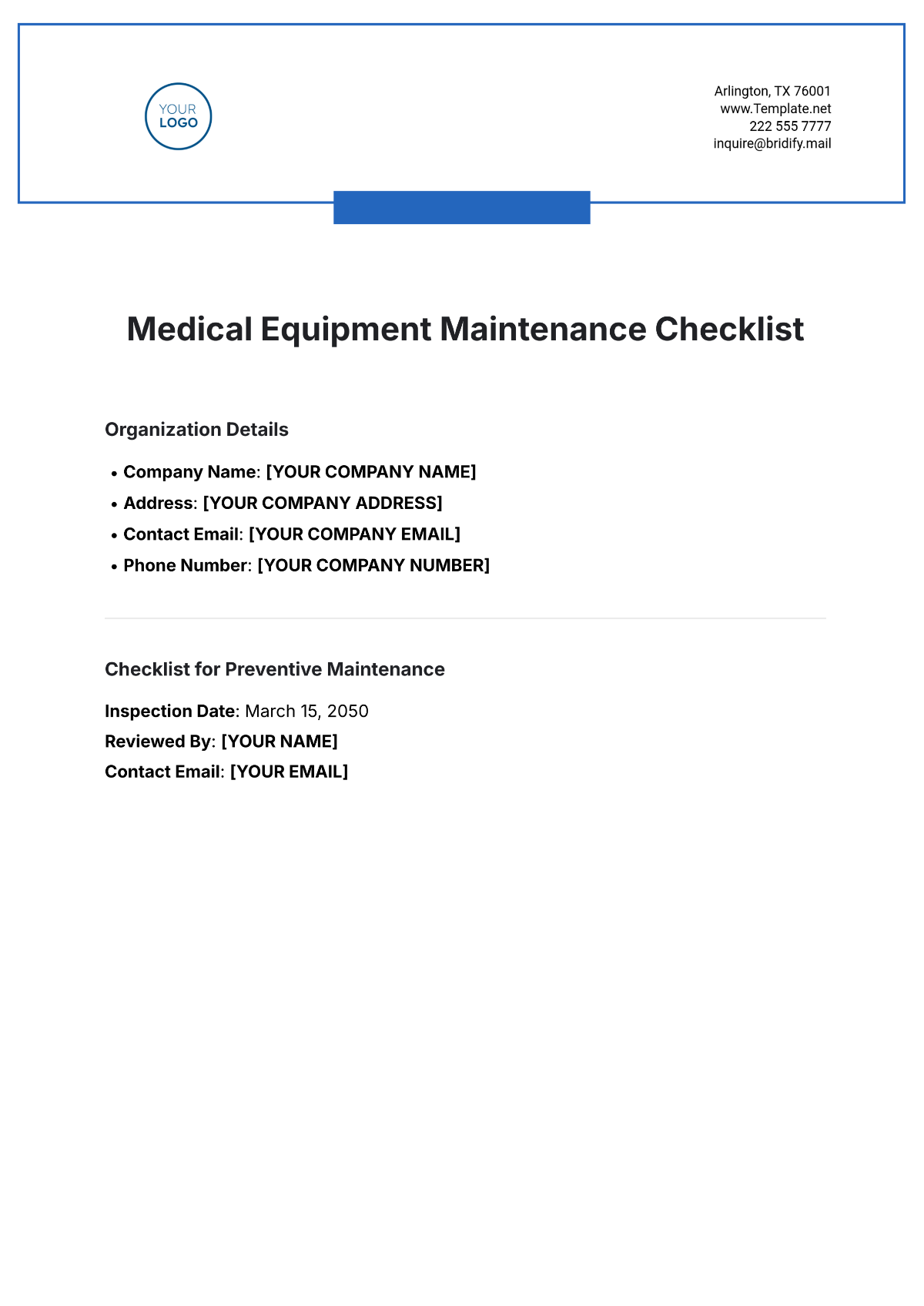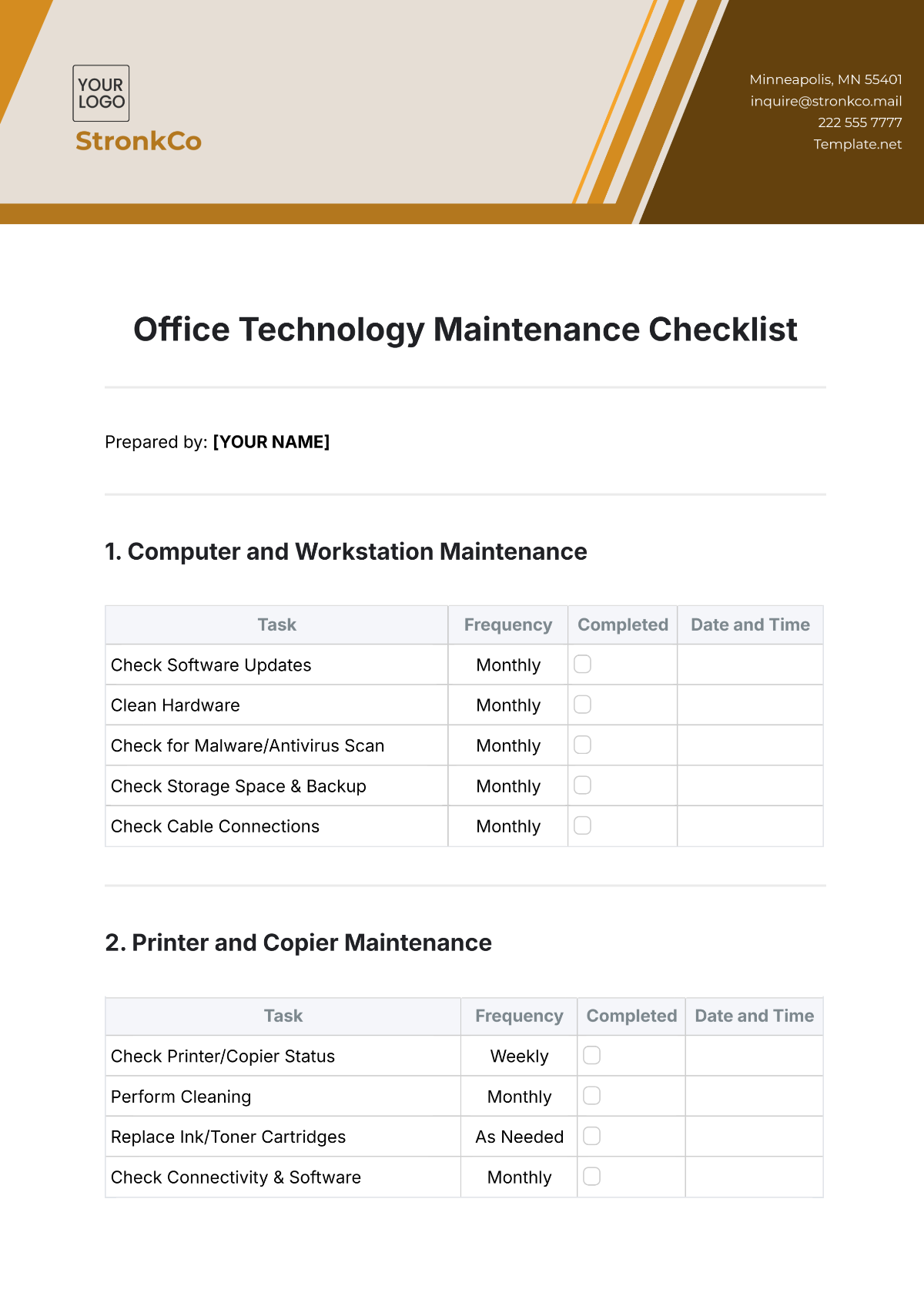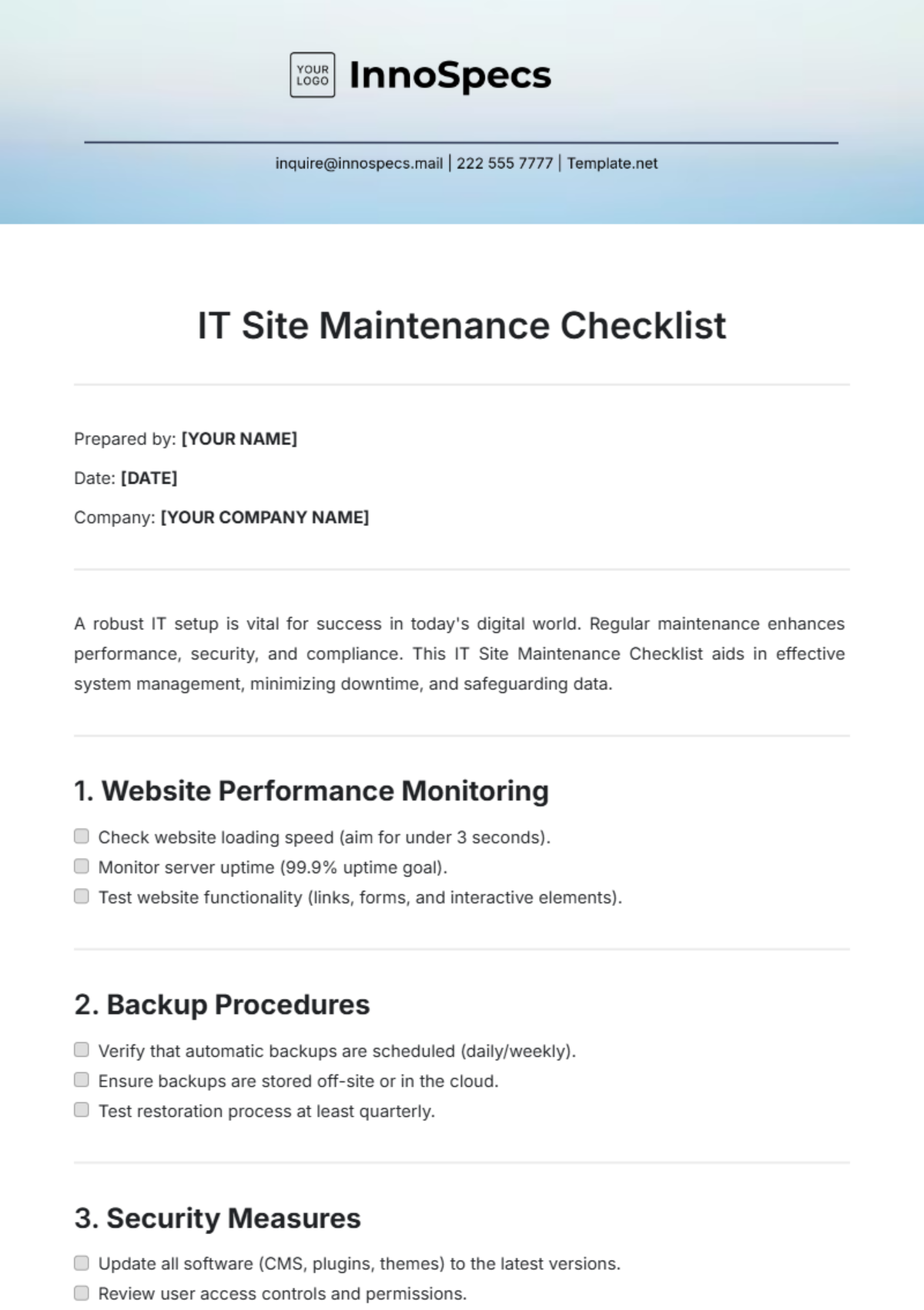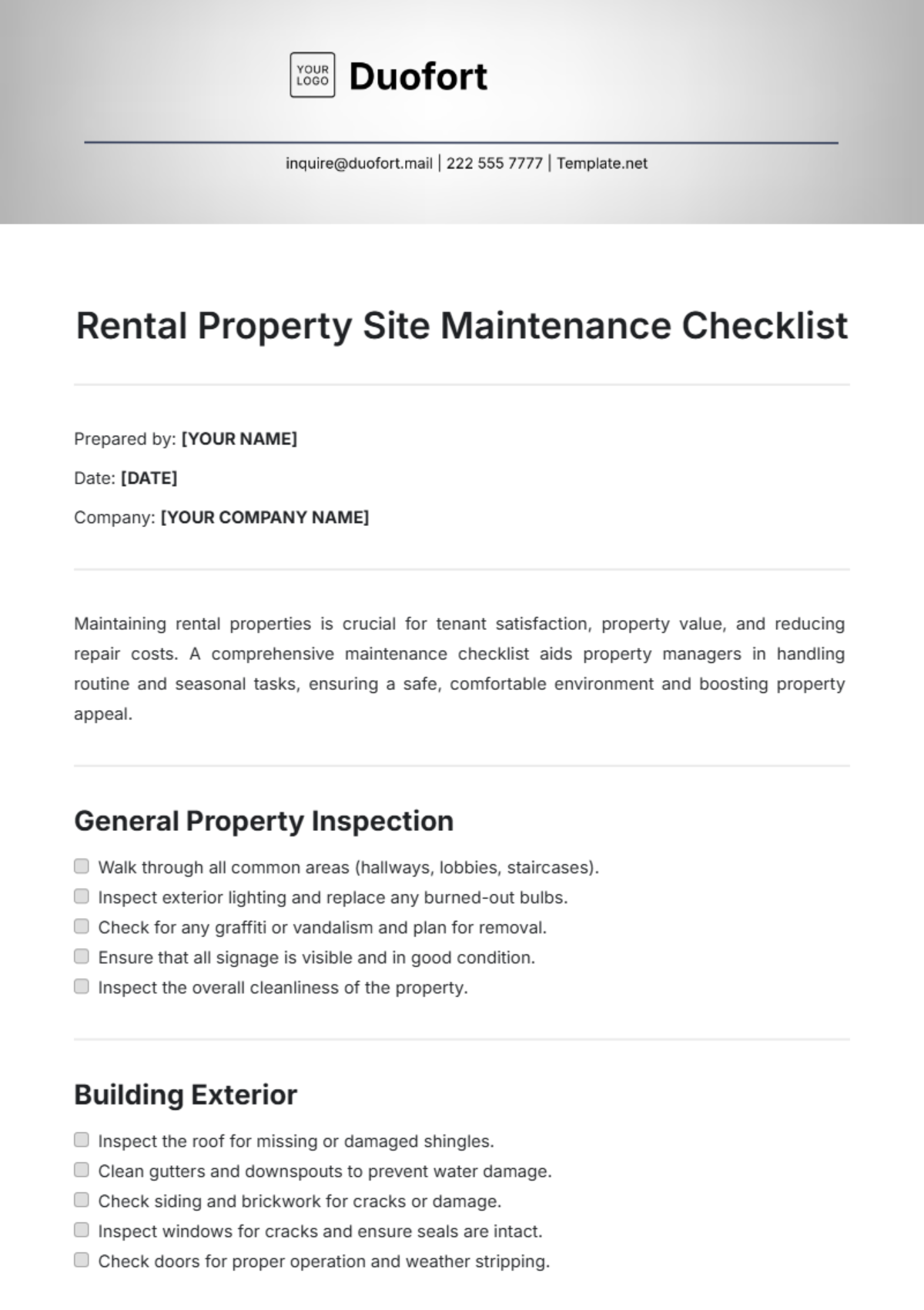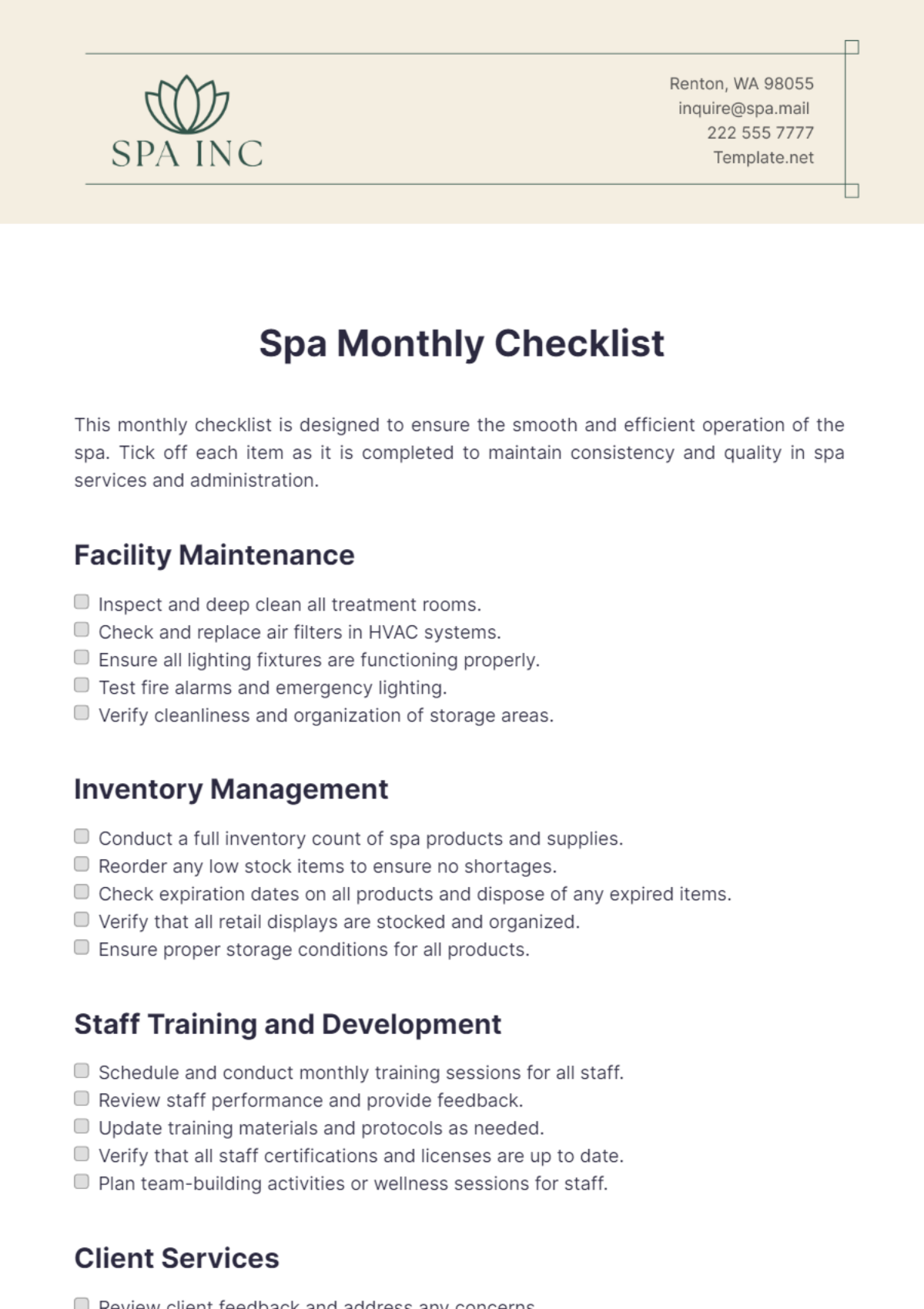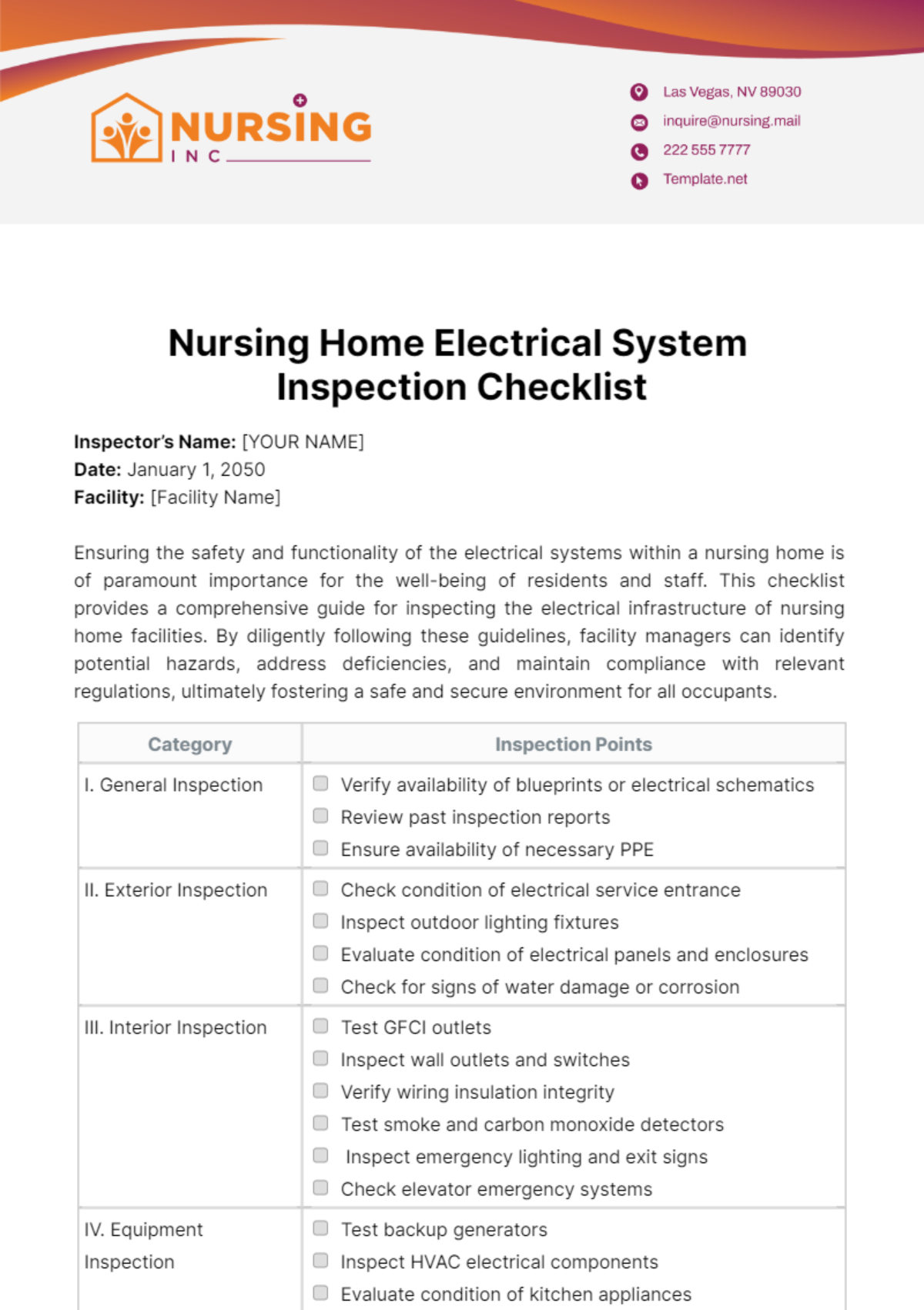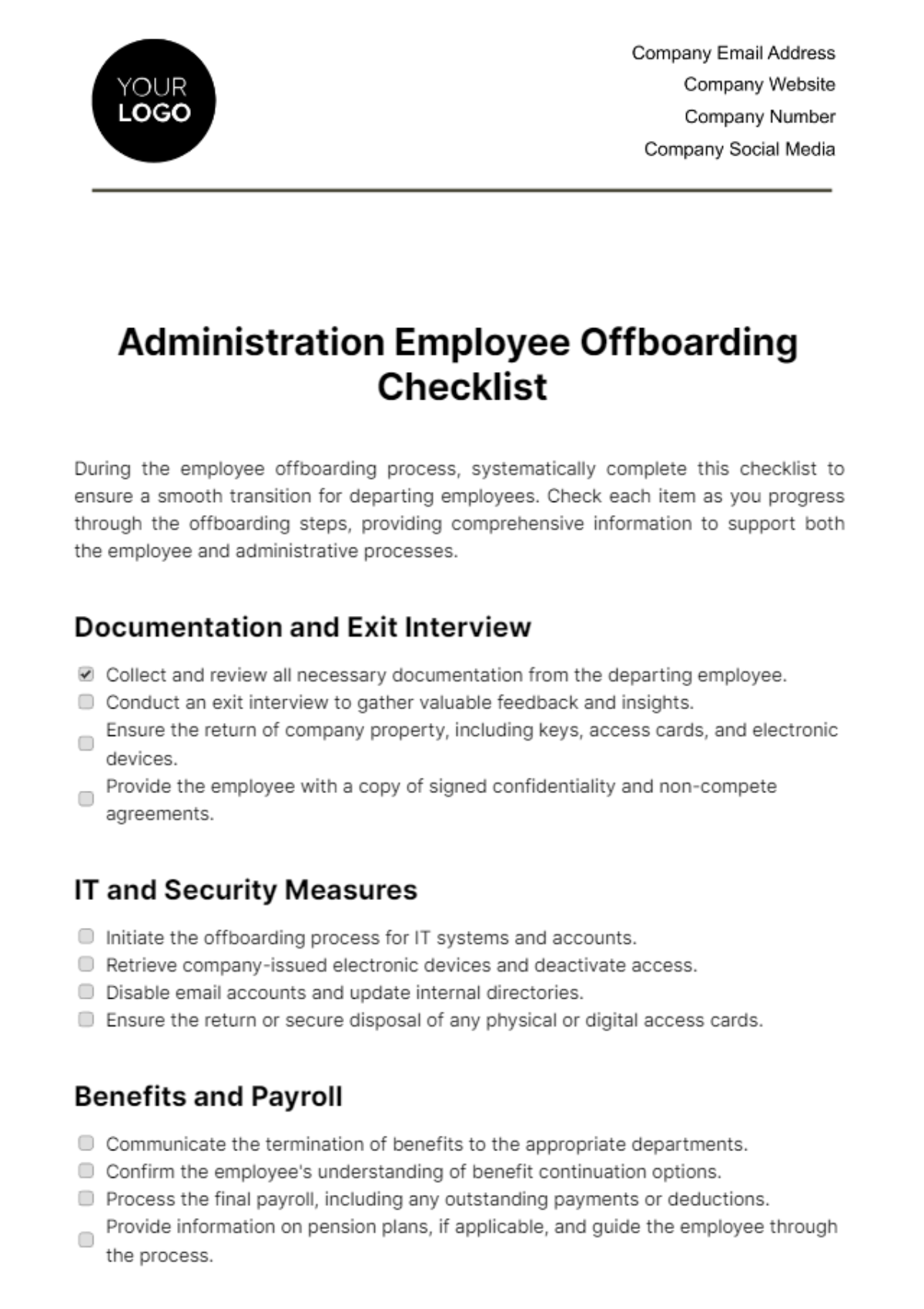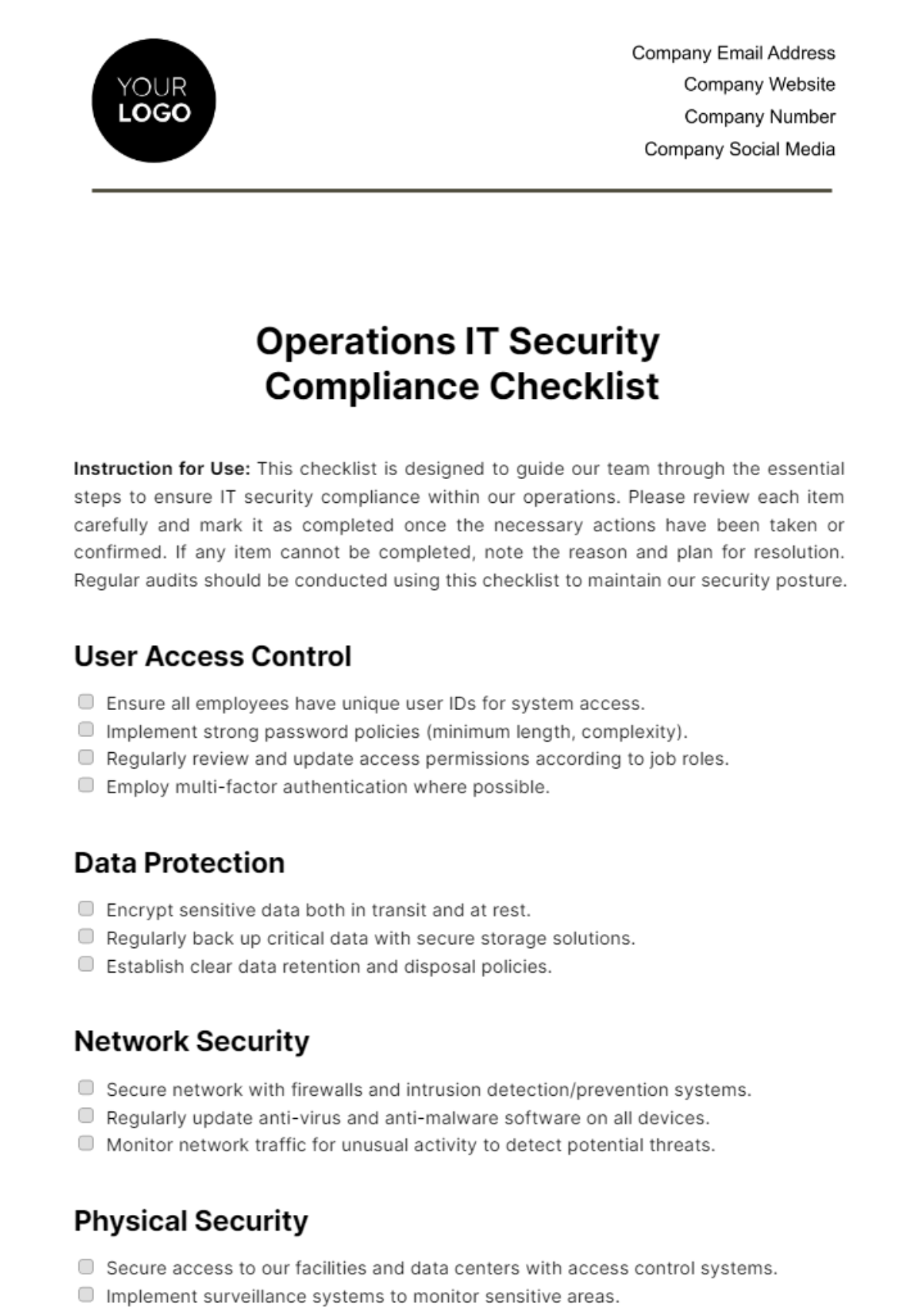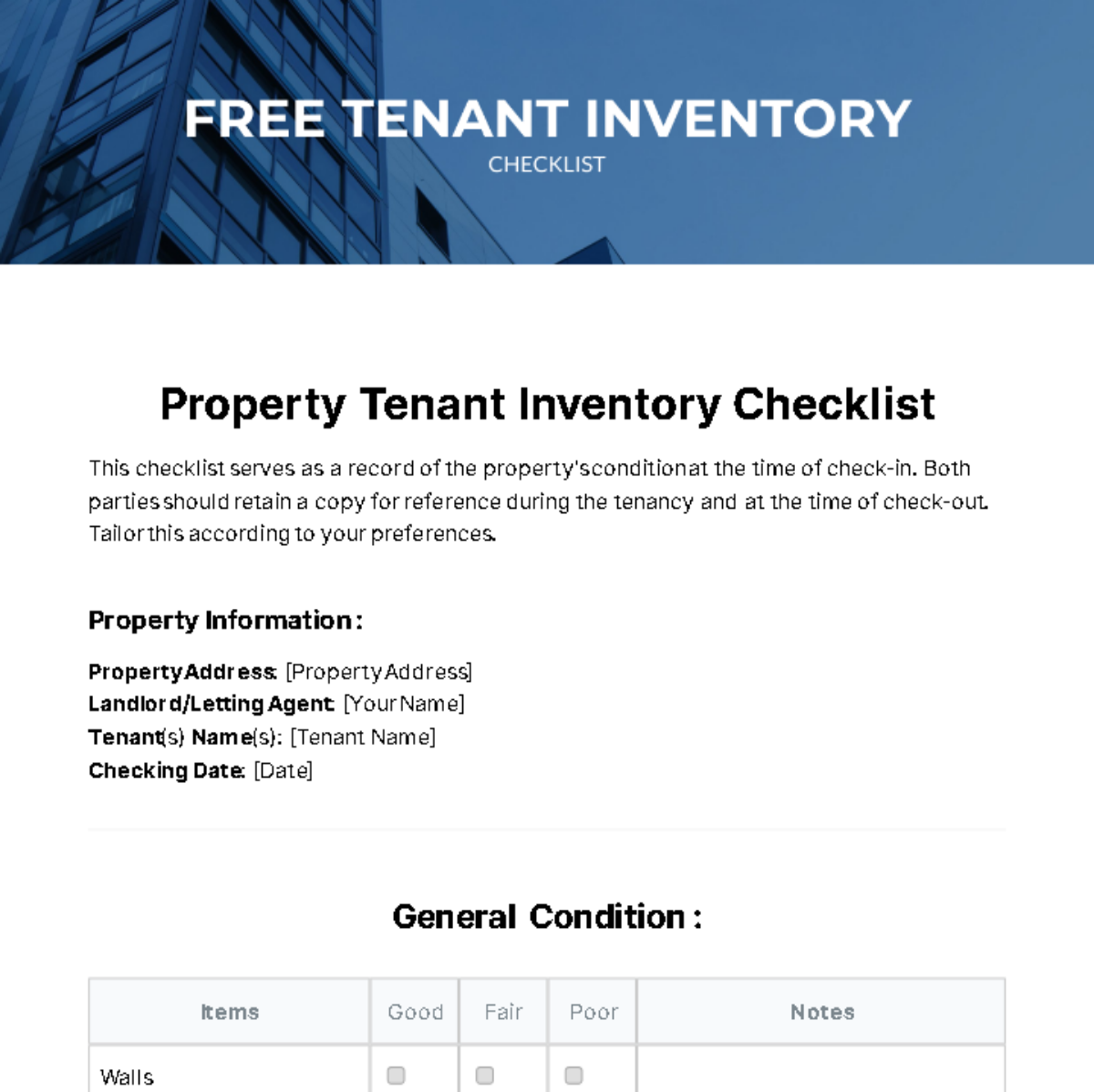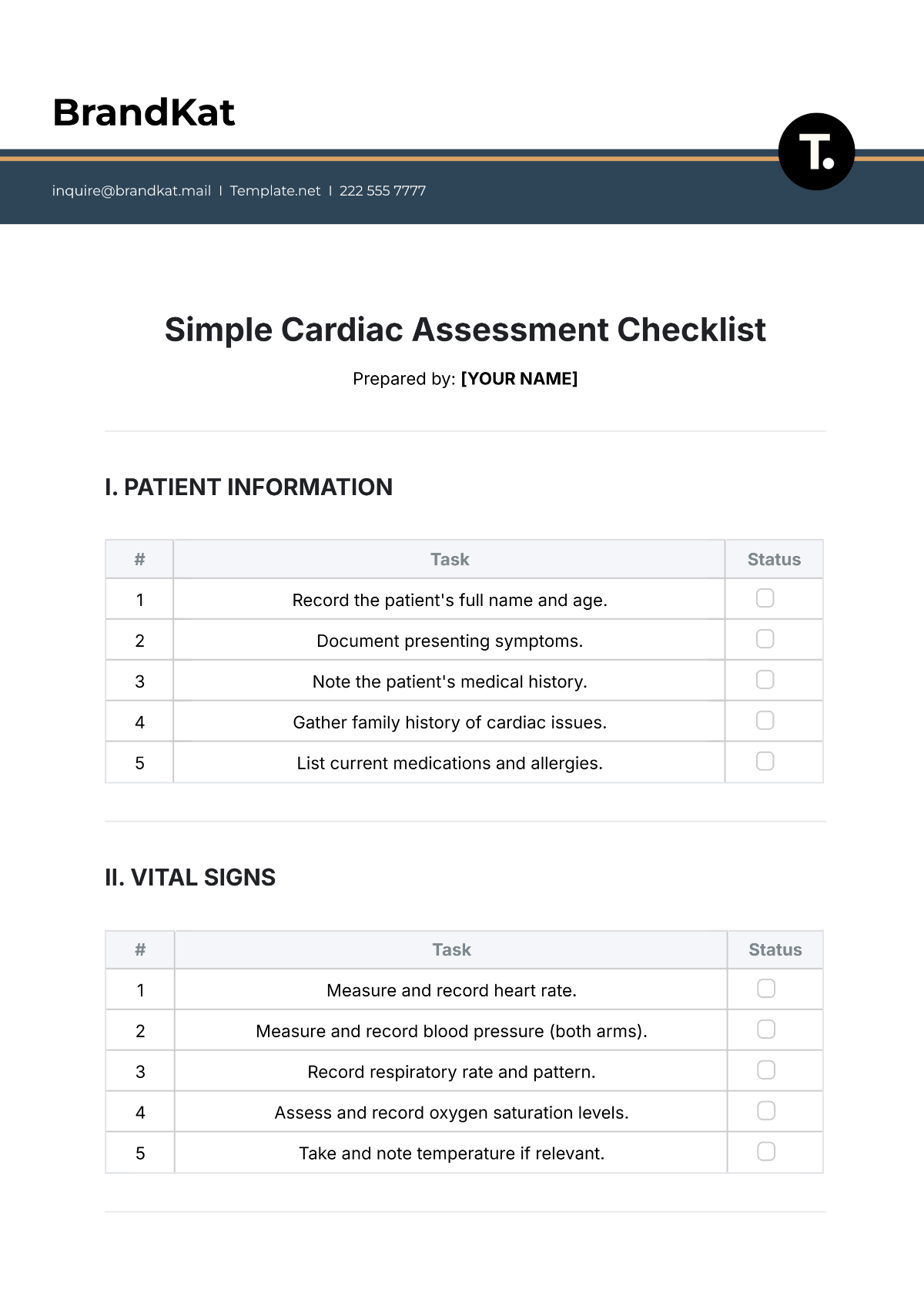IT Site Maintenance Checklist
Prepared by: [YOUR NAME]
Date: [DATE]
Company: [YOUR COMPANY NAME]
A robust IT setup is vital for success in today's digital world. Regular maintenance enhances performance, security, and compliance. This IT Site Maintenance Checklist aids in effective system management, minimizing downtime, and safeguarding data.
1. Website Performance Monitoring
Check website loading speed (aim for under 3 seconds).
Monitor server uptime (99.9% uptime goal).
Test website functionality (links, forms, and interactive elements).
2. Backup Procedures
Verify that automatic backups are scheduled (daily/weekly).
Ensure backups are stored off-site or in the cloud.
Test restoration process at least quarterly.
3. Security Measures
Update all software (CMS, plugins, themes) to the latest versions.
Review user access controls and permissions.
Conduct regular security audits and vulnerability scans.
Implement firewall and intrusion detection system (IDS) monitoring.
4. Content Updates
Review and update website content for accuracy and relevance.
Ensure that all multimedia elements (images, videos) are optimized.
Check for broken links and fix or remove them.
5. SEO Maintenance
Review and update meta tags and descriptions.
Check keyword rankings and adjust content as necessary.
Analyze website traffic and performance through analytics tools.
6. Hardware and Software Maintenance
Update antivirus and anti-malware software.
Perform regular disk clean-up and defragmentation (if applicable).
Check hardware performance and replace outdated components.
7. User Experience (UX) Review
Gather user feedback and conduct usability testing.
Ensure mobile responsiveness and compatibility.
Review accessibility standards compliance (WCAG).
8. Documentation and Reporting
Update IT documentation (system configurations, user manuals).
Maintain an incident log and track resolutions.
Prepare monthly/quarterly maintenance reports for stakeholders.
9. Network Maintenance
Check network performance and bandwidth usage.
Review network security protocols and update them as necessary.
Ensure redundancy and failover mechanisms are operational.
10. Disaster Recovery Planning
Review and update the disaster recovery plan.
Conduct disaster recovery drills and simulations.
Ensure all team members are familiar with the recovery procedures.
Final Notes
Assign responsibilities for each item on the checklist.
Schedule regular maintenance intervals (monthly, quarterly, annually).
Stay informed about new technologies and security threats to continuously improve site maintenance practices.
